Selfish thinning of Tasmania’s Forest Deal
Tuesday, May 7th, 2013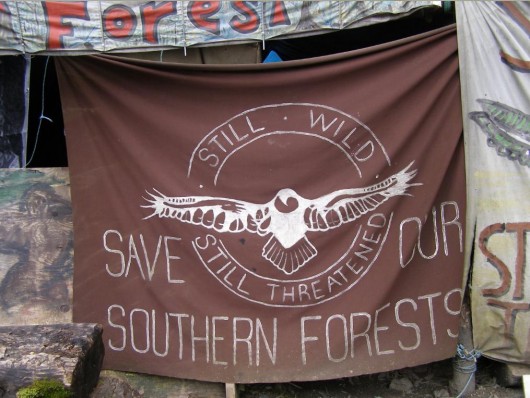 One of the last honourable environmental organisations fighting to save Tasmania’s Native Forests
Still Wild Still Threatened
^http://www.stillwildstillthreatened.org/
One of the last honourable environmental organisations fighting to save Tasmania’s Native Forests
Still Wild Still Threatened
^http://www.stillwildstillthreatened.org/
.
‘Mutant Legislation: a thinned out Tasmanian Forests Agreement
.
On the evening of 30th April 2013, Tasmania’s Parliament passed the Tasmanian Forests Agreement Bill 2012 into law.
The legislation formalises a revised agreement between selective Tasmanian environmental organisations, selective Tasmanian logging business associations, the Tasmanian Parliament and the Australian Government.
The original Inter-Governmental Agreement (IGA) signed by Prime Minister Julia Gillard and Tasmania’s Premier Lara Giddings on 7 August 2011 in Launceston. But instead of honouring the letter and spirit of the 2011 agreement to protect 572,000 hectares of Tasmania’s remaining high conservation forests protected, the resultant law has thinned out that protection down to a forest area of just 20% of the 572,000, to just 123,000 hectares.
Supposedly, the legislation proposes 500,000ha of reserves in 18 months’ time, providing the durability of the deal has been established. Weasel words and 76,000 of the 576,000 hectares of old growth sacrificed by those whom we entrusted to protect habitat.
The passing of the Bill was a culmination of a period of closed door negotiations between the selected environmentalists and the selected loggers. Despite compromising 80% of the high conservation forest, the legal outcome sees absolutely no compromise from the loggers. The loggers still stand to be compensated the same $276 million in federal restructure assistance, purported blowing out to $350 million, and that is on top of millions already forked out to exiting loggers.
The environmental signatories of forest betrayal in the deal include The Wilderness Society, the Australian Conservation Foundation, Environment Tasmania. The selected loggers were dominated by a certain Terry Edwards, chief executive of the Forest Industries Association of Tasmania (FIAT) and Glenn Britton, its chairman, both who stand to profit.
[Source: Act now on forest truce: PM’, 20130501, by AAP, in The Mercury (News Ltd), ^http://www.themercury.com.au/article/2013/05/01/378268_tasmania-news.html].
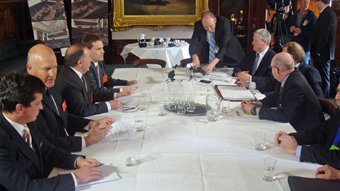 Three years ago in 2010, the Signatories to the Tasmanian Forest Statement
agreed on protecting the full 572,000 hectares
.
Ed: Suited up company men, but was any a Real Man?
Three years ago in 2010, the Signatories to the Tasmanian Forest Statement
agreed on protecting the full 572,000 hectares
.
Ed: Suited up company men, but was any a Real Man?
.
“Compromise is usually a sign of weakness, or an admission of defeat.
Strong men don’t compromise, it is said, and principles should never be compromised.”
~ Andrew Carnegie
.
The destruction continues and so the protests will continue. Dumb outcome!
.
Two months prior on 4th March 2013, two conservationists were arrested at Tasmania’s Butlers Gorge as they tried to block logger access to three separate logging operations in an area nominated for World Heritage.
<<“Today’s peaceful protest has once again highlighted the ongoing destruction of Butlers Gorge. This area is significant habitat for endangered species and native wildlife. Still Wild Still Threatened have collected video evidence of Tasmanian devils and spot tailed quolls within Butlers Gorge and we are calling on Tony Burke to take action to protect these forests” said Ms Gibson.
“Two dedicated conservationists have today been arrested in order to bring attention to the hypocrisy of the Australian Government, who are allowing this logging to continue despite nominating these forests for World Heritage. (Federal) Minister Burke as a responsibility to protect the habitat of these endangered species and to protect these forests that he has nominated as World Heritage. We are calling on the Minister to enact Section 14 of the Environmental Protection and Biodiversity Conservation Act and bring an end to the destruction of these forests” said Ms Gibson.>>
[Source: ‘Two conservationists arrested at Butlers Gorge today’, Mar 5, 2013, Miranda Gibson, The Observer Tree, ^http://observertree.org/2013/03/05/media-update-two-conservationists-arrested-at-butlers-gorge-today/].
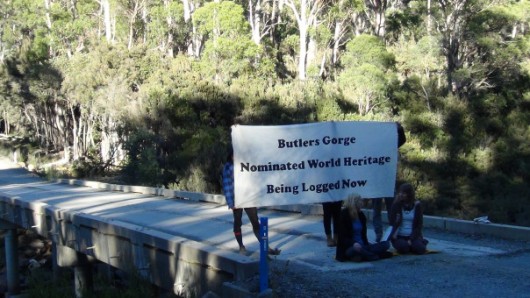 2nd March 2013: Local environmentalists protesting against the logging of World Heritage value old growth forests of Butlers Gorge
[Source: ^http://observertree.org/2013/03/05/media-update-two-conservationists-arrested-at-butlers-gorge-today/]
.
2nd March 2013: Local environmentalists protesting against the logging of World Heritage value old growth forests of Butlers Gorge
[Source: ^http://observertree.org/2013/03/05/media-update-two-conservationists-arrested-at-butlers-gorge-today/]
.
Ed: Real Tasmanians out there defending disappearing ancient forests – just a committed five on a remote bridge forming the last and only line of defence to prevent logging trucks, corporate loggers, and corrupt Tasmanian police who know the arsonists that set fire to peaceful Camp Flozza and to the forest west.
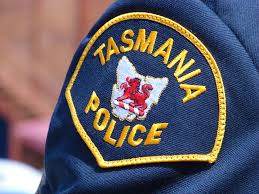 .
.
<<The evil when loggers control forests is that logging vandalism rapes the timber from the forest ecology. It leaves behind scorched earth and trusting contractors who took out mortgages. When ecological management ascends to its rightful governance of native forests, the forest ecology thrives and permits at its fringes a viable high end cabinet industry.
But the low life corporate thieves and their immoral mercenaries are forced to inflict their hate and greed elsewhere. And then out of spite, Bob’s mercenaries set fire to the forest like a spouse scorned.>>
~ Tigerquoll, 20130327, Tasmanian Times, comment ^http://tasmaniantimes.com/index.php?/weblog/article/dear-bob-this-is-the-21st-century-/show_comments/
.
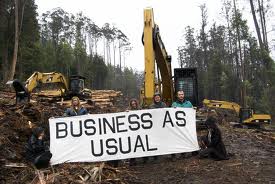 A Loggers Deal
A Loggers Deal
.
3rd May: Conservation beliefs sacrificed down the drain
(analysis of the 2013 Forest Deal by Tasmanian author, Richard Flanagan)
.
<<So Julia Gillard has declared that she wants the parties who started the so-called Tasmanian forest peace process “to do everything they can to use their abilities to silence those who haven’t gone with the mainstream consensus”.
To silence.
I lived with the silence of Tasmania for too many years. And now the leaders of The Wilderness Society, Environment Tasmania, the ACF and the Tasmanian Greens have signed up to a deal that seeks to achieve what even Gunns failed in doing: silencing the rage Tasmanians felt with the destruction of their land and the corruption of public life that for a time became its necessary corollary. It is perhaps the greatest own goal in Australian political history.
For these environmentalists have managed to negotiate a deal that extraordinarily manages to resuscitate at vast public subsidy (reportedly $350 million) the worst aspects of a dead forest industry employing less than a thousand people; lock in social conflict for another decade; empower in Forestry Tasmania a rogue government agency that sees itself as the real power on the island and which works to undermine governments; and delivered the island to political stagnation by ensuring forestry remains the island’s defining political issue.
If this wasn’t grotesque enough the Federal Government’s National Audit Office’s report into the mishandling and misspending of some of the early rounds of this money by Tasmanian government instrumentalities can give the Australian taxpayer every confidence that much of the rest of the $350 million will be misspent, misdirected and misused. Taxpayers can also be assured that if past government bail-outs of the Tasmanian forest industry are any guide, a not insignificant sum of their money will end up funding political groups and campaigns seeking to promote the self-serving interests of a Soviet style industry by entrenching division and stymying political debate and economic change in Tasmania. Some millions of dollars allocated for ‘communications’ will no doubt communicate very well just one message about Tasmania’s logging industry.
And all this in return for what?
The only environmental outcome that is locked in was one already in place: the 123,000 hectares of World Heritage Area secured by Bob Brown and Christine Milne in negotiations with Tony Burke in February. And this in the face of initial opposition from NGO negotiators who worried it might damage their forest deal process. Nick McKim’s claim that there was “legislated protection from logging for over 500,000 hectares”, is misleading. There is a moratorium on logging in those high conservation value forests that could fall over at any time, and almost certainly will.
 Richard Flanagan
(Author of this extracted article)
[Source: Photo by Colin Macdougall, Tasmanian Times,
^http://tasmaniantimes.com/index.php?/weblog/article/i-dont-agree/]
Richard Flanagan
(Author of this extracted article)
[Source: Photo by Colin Macdougall, Tasmanian Times,
^http://tasmaniantimes.com/index.php?/weblog/article/i-dont-agree/]
.
Astonishingly, in a day that will become historic in their own annals, the environmentalists’ leaders have managed to split their own movement in a way that will take many years for it to recover from. The greatest sadness is that it locks Tasmania into a conflict it should have ended.
Beyond that there is only what State Greens leader Nick McKim and Environment Tasmania head Phill Pullinger have called ‘pathways’ to future environmental outcomes.
.
Pathways? What is a pathway? Is it a forest? Is it a job?
.
Well, no, it’s nothing really, just a confusion of two words, management babble disguising the truth that everything else is but a promise that may or may not happen later.
The formal protection of areas as reserves and national parks will not begin until October 2014, and then only if conservationists meet conditions that realistically will never be met.
Of the many disturbing aspects of the deal, perhaps the most grotesque is the already infamous ‘durability’ clause, under which conservation leaders sitting on a special council with loggers are expected to police and silence conservationists who protest. If they fail to silence their own, the deal is seen to have failed its durability criteria and new reserves promised in the deal do not go ahead and return to the loggers. But of course people will protest and they will be right to protest. The only thing the deal guarantees is the conservation movement at war with itself. Some deal. Some durability. The conservationists’ leaders may as well have self-immolated at the foot of Parliament House.
The second condition is that the forestry industry achieve Forestry Stewardship Council accreditation for its logging — something the industry spat on when conservationists urged it several years ago. Given its abysmal record and third world practices along with inevitable community opposition, this seems as likely as Julia Gillard winning The Voice. But the condition locks in those conservation groups that are signatories to the deal to campaigning for the industry’s logging practices, no matter how dreadful they are, in order to keep alive the promise of saving the forests.
Compounding these perversities there is the simple matter of power. By October 2014, all observers expect Liberal governments to be in power in both Tasmania and federally. In Tasmania the Liberal Party has been explicit that it will tear up the agreement. What then of the moratorium? Well it ends with those areas being once more logged using taxpayer subsidies.
Many fear that both governments will endorse and subsidise a grotesque new forest industry that logs native forest to fuel forest furnaces—so called bio-mass electricity generators — that could by government fiat be defined as a renewable energy source.
Such then is the pathway chosen.
It is possible for good people for the best of reasons to sometimes do the worst of things. If the integrity of the leaders of the environmental NGOs and the Tasmanian Greens Party should not be questioned, their judgement certainly can. Full credit though must go to Terry Edwards of the Forest Industries Association of Tasmania, Evan Rolley running the dubious state-subsidised Malay-owned Ta Ann, and Bob Gordon and Bob Annells at Forestry Tasmania. From a position of almost complete defeat they have returned the forestry industry to its pre–eminent position in Tasmanian public life and persuaded the environment movement to destroy itself. With bluster, flattery, bullying, and dogged persistence they have achieved the near impossible.
But if you care about the environment in Australia you will henceforth have to ask whether The Wilderness Society and the Australian Conservation Foundation any longer serve your interests. Will they in the future question and campaign against corporate power or will they side with it as they have in Tasmania, recently trooping off to Japan to promote the Malay forest veneer company Ta Ann’s products? Will they stand up to governments or will they be seduced by their attentions, believing the flattering lie that their way is the way of environmental politics in the future?
While nationally the Greens Party under Christine Milne has been resolute in defending the environment and Tasmania’s forests, Tasmanian environmentalists would be right to ask if the Tasmanian parliamentary Greens (other than Kim Booth who showed courage in voting against the bill and his party) any longer particularly represent their interest or aspirations. At the forthcoming state election there would be many reasons for environmentalists to not vote Green and very few to support them. In their determination to achieve respectability, they seem to have become simply the third aspect of a conservative Tasmanian polity with no ideas or vision for the future. Could it be, that for Nick McKim, the decision to support the package proves his Meg Lees moment? [Ed: In 1999, Democrats leader Meg Lees sided with then PM John Howard to enable his GST law to be passed, broadly viewed as a decision of betrayal that instigated the eventual downfall of the Democrats].
Julia Gillard’s celebration of the peace deal and her call for silencing came on May Day, the day that celebrates all those who went against the ‘mainstream consensus’ that workers shouldn’t be paid a living wage, that workers shouldn’t be treated with respect and dignity. Democracy is about many things, but silence and silencing are the death of democracy.
The forest peace deal was born in ignominy, with Gunns seeking to set up a native-forest-for-pulp-mill swap, a fact denied by environmental leaders at the time but acknowledged by Premier Lara Giddings in parliament. It continued in secrecy and was oiled with evasions, and concludes as a tragedy for Tasmania. Somehow, the conservationist leaders—instead of using the commercial death of the logging industry, changing social values, and new ideas of a renascent Tasmania to help build a different, better and united society — have condemned us all to endlessly repeat the sadness of recent decades.
I am writing this for all the people who for the last thirty years have stood up again and again against the Tasmanian ‘mainstream concensus’— who stood up for the land they loved and for an idea of a better Tasmania. They have watched, ever more distraught, as their battle has culminated in the last three years of secret deal making that has sold their sacrifices and beliefs down the drain.
At the end the only certainty and hope I have is this: I never signed up to the forest deal, not then and certainly not now. I don’t give a damn for durability clauses and special councils of loggers and conservation police. And I didn’t agree to be silenced, not by Paul Lennon, not by Gunns, and I won’t be now by The Wilderness Society and the ACF.
And in all this, I know I am very far from alone.>>
[Source: ‘I don’t agree’, by Tasmanian author Richard Flanagan, 20130503, Tasmanian Times, ^http://tasmaniantimes.com/index.php?/weblog/article/i-dont-agree/].
[Ed: Hear, hear!]
.
1st May: Forest advocates have become the greenwash industry brigade
(analysis of the 2013 Forest Deal by honourable Tasmanian Environmentalists)
.
Honourable environmental organisations in Tasmania have vowed to up the ante on forest protests after the passing of the 2013 Tasmanian Forests Law.
Groups on the outside of the tent for the peace talks, including Still Wild Still Threatened and The Huon Valley Environment Centre, said this morning they would continue to campaign against the state’s forestry industry.
“We are absolutely committed to continue to protest and take action for these forests,” Still Wild Still Threatened spokeswoman Miranda Gibson said. “These forests, while they are continuing to fall, the community will stand up and … communicate to the markets about what is happening in Tasmania.”
Ms Gibson, who recently ended a marathon tree-sit in southern Tasmania, and Huon Valley Environment Centre’s spokeswoman Jenny Weber said the TFA provided no guarantees for future reserves.
.
“A bill that lacks conservation assurances
and props up a collapsing and unviable destructive native forestry industry.”
.
The legislation underpinning the deal, which passed the Tasmanian Parliament yesterday, proposes 500,000ha of reserves in 18 months’ time, providing the durability of the deal has been established.
Ms Weber said environmental organisations not associated with the ‘Agreement’ could deliver better outcomes than the environmental signatories.
“The legislation yesterday saw a very large void come in the environment movement,” she said. “We have seen environment groups vacate the space as forest advocates and move into becoming the greenwash industry brigade.”
The bill passed in Tasmania’s House of Assembly yesterday is primarily yet another industry lifeline and has betrayed the environment.
Grass-roots environment organisations have been left stunned that a bill that lacks conservation assurances and props up a collapsing and unviable destructive native forestry industry has passed with support of some Greens parliamentarians.
Still Wild Still Threatened and Huon Valley Environment Centre have renewed their commitment to forest protection advocacy in all forms.
Huon Valley Environment Centre’s spokesperson Jenny Weber stated, “Today we are far from assurances of protection for Tasmania’s wild forests. The passing of this legislation, that is very pro-industry with merely a conservation veneer, does not deliver any upfront forest reserves.
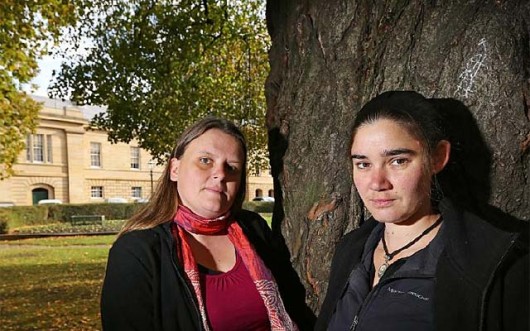 Environmental Activists Jenny Weber, left, and Miranda Gibson
outside Tasmania’s Parliament House, Hobart, 20130501
[Source: Photo by Sam Rosewarne, The Mercury,
^http://www.themercury.com.au/article/2013/05/01/378238_tasmania-news.html]
Environmental Activists Jenny Weber, left, and Miranda Gibson
outside Tasmania’s Parliament House, Hobart, 20130501
[Source: Photo by Sam Rosewarne, The Mercury,
^http://www.themercury.com.au/article/2013/05/01/378238_tasmania-news.html]
.
Logging will continue inside the proposed reserves, as there are areas of forest that were excised from the proposed reserves to meet the logging schedule.
“This legislation fails the wild forests, and we will be there to provide scrutiny of a forestry industry that has not made any commitment to changing environmentally destructive practices,” Jenny Weber said.
Still Wild Still Threatened spokesperson Miranda Gibson stated:
“In response to the Forest Bill passed by the House of Assembly yesterday, the Huon Valley Environment Centre and Still Wild Still Threatened have vowed to continue to campaign for Tasmania’s forests. The legislation entrenches and props up the unviable native forest industry and ongoing logging of high conservation value forests, while making the attainment of new reserves virtually impossible. Conservation outcomes have been undeniably sidelined. Those groups and members of the Tasmanian State Greens who have supported this bill have aligned themselves with the collapsing forestry industry at the expense of our forests.”
.
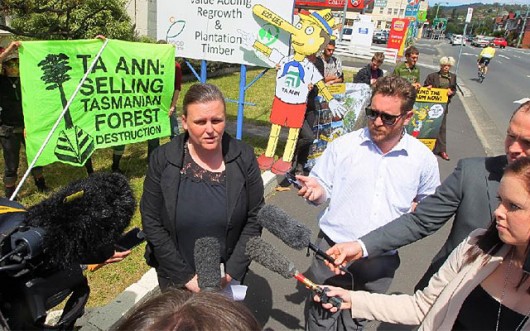 Jenny Weber of The Huon Valley Environment Centre
talking to the media at a protest outside foreign corporate logger, Ta Ann’s Hobart headquarters (October 2012.)
[Source: ^http://www.themercury.com.au/article/2012/11/07/365524_tasmania-news.html]
Jenny Weber of The Huon Valley Environment Centre
talking to the media at a protest outside foreign corporate logger, Ta Ann’s Hobart headquarters (October 2012.)
[Source: ^http://www.themercury.com.au/article/2012/11/07/365524_tasmania-news.html]
.
Huon Valley Environment Centre’s Jenny Weber:
“We are alarmed by the threat to curtail freedom of speech and the rights of protest out of yesterday’s legislation, which attempts to blackmail the community into silence by holding forests at ransom. These are undemocratic tactics to silence the voice of the community and benefit the forestry industry. The new clause provides the opportunity for either House of Government to determine what constitutes a failure of durability, including substantial active protests or substantial market disruption, and once that determination is made, reserves do not proceed.”
“When one wades through all the spin being propagated by parliamentarians and signatories to the TFA, forestry in Tasmania is at the point where it continues to drain public resources and destroy irreplaceable ecosystems. It has tarnished Tasmania’s brand by not recognising the value of unique native forests and by maintaining unsustainable resource management practices coupled with a wasteful and irresponsible on-the-ground approach. If that wasn’t enough, they have created a green-wash industry for Hamid Sepawi’s Ta Ann and those connected with Sarawak timber mafias and human rights violators. What is clear out of this process is that Ta Ann has received ongoing parliamentary support in Tasmania and now a green-wash tick from some environment groups. We will continue to oppose the ongoing operations of this company in Tasmania and Sarawak.”
“As The Wilderness Society, Environment Tasmania and the Australian Conservation Foundation are now committed to forsaking the role of forest advocacy and have become the green-mouthpiece for a forestry industry, who yesterday claimed they got everything they wanted out of the of the TFA process and consistently refuses to make necessary changes to their out-dated, destructive and reprehensible practices, our organisations will redouble our efforts to campaign for the protection of intact natural ecosystems.”
.
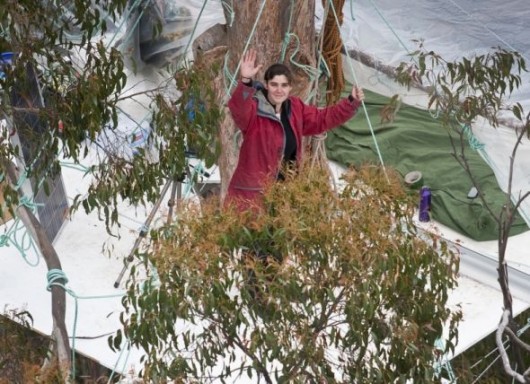 Miranda Gibson in ObserverTree
^http://observertree.org/
Miranda Gibson in ObserverTree
^http://observertree.org/
.
Still Wild Still Threatened’s Miranda Gibson:
“The native forest industry is not economically viable when left to stand on it’s own two feet. Yet, the House of Assembly has just passed a bill that will continue to prop up this out-dated and unviable industry with tax payer funds whilst disregarding community concerns and scientific recommendations for forest protection.”
“It is delusional to believe that this bill will deliver adequate forest protection. Hundreds of thousands of hectares of verified high conservation value forests are being held to ransom, with protection subject not only to durability measures at the whim of both houses of Tasmania’s parliament, but also dependent on FSC certification. Under this bill high conservation value forests will continue to fall and human rights violations tacitly accepted. As long as they do, we will continue stand up for those ecosystems, forests, communities and cultures that are threatened.”
.
[Source: Miranda Gibson spokesperson for Still Wild Still Threatened, and Jenny Weber spokesperson for Huon Valley Environment Centre, ^http://www.stillwildstillthreatened.org/current-news/media-release-1.05.13-long-haul-tasmanian-forest-protection-delivered-if-ever…].
“We are absolutely committed to continue to protest and take action for these forests.”
~ Still Wild Still Threatened spokeswoman Miranda Gibson.
.
1st May: Let’s not pretend agreements come from a small number of people who hold up a sign.
(Australia’s Federal Environment Minister, Tony Burke)
.
<<‘Let’s not pretend that you’re ever going to get an agreement that will stop there from being a group of… you know… a small number of people who hold up a sign.
But let’s also not forget that in this group you’ve got the Australian Conservation Foundation, the Wilderness Society and Environment Tasmania as the ‘umbrella group’ and you’ve got all of those groups on side with the Agreement, it means you cannot get an effective market campaign that wll damage the Australian market any more. And that… is a massive shift. And when you take out all the peak groups and have all of them on-side with the Agreement, that makes a massive difference to markets for Tasmania.
You’ll get the odd skirmish from small minor… minor groups and things like that. Yeah and I don’t want to set a silly threshold. What we have seen from the last thirty years – ends tonight. And that is something to celebrate.”
.
[Source: ‘Christine Milne: ‘Picking over a dead carcass’, via David Obendorf, Tasmanian Times, 20130501, ^http://tasmaniantimes.com/index.php?/weblog/article/christine-milne-picking-over-a-dead-carcass] .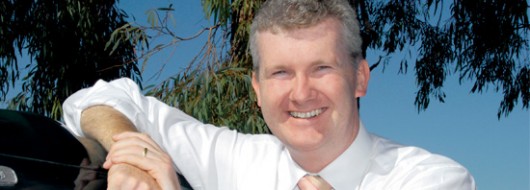 Tony Burke – a smiling eco-assassin
Tony Burke – a smiling eco-assassin
.
[Ed: Populist utilitarian politicking that foresakes deontological ethics is cowardly. It serves the preservation of one’s vested interests, leaving behind a sullied reputation in the minds of ordinary people. Burke has shown himself to be but a smiling eco-assassin, perhaps eyeing his polly pension before September.
.
Burke is clearly ignorant of the magic of Margaret Mead who famously said:
“Never doubt that a small group of thoughtful, committed, citizens can change the world. Indeed, it is the only thing that ever has.”
.
..and who also famously said..
.
“Never depend upon institutions or government to solve any problem. All social movements are founded by, guided by, motivated and seen through by the passion of individuals.”]
.
1st May: It is the carcass of that Agreement..people picking over the scraps, deciding what can be salvaged or not
(Australian Greens Senator Christine Milne)
.
<<What started out as a process to exit native forest logging has turned into a process to entrench native forest logging, to have ET, TWS and ACF promote FSC certification for native forest logging and also to subsidise that native forest logging with tax-payer dollars… and there are no secure conservation outcomes except the World Heritage extensions and I do congratulate everyone involved in that, including the federal Minister [Tony Burke] and I look forward to the world Heritage nomination going through in June [2013]. But that is the only secure outcome everything else has been pushed onto the never-never… beyond the federal and the next State election.
So this so called ‘conservation gain’ is a moratorium that can’t be translated into permanent reserves until after October 2014 and then only if FSC certification for Tasmanian native forest logging goes through, if in the eyes of the Legislative Council the community has been silenced and there have been no markets campaign… and then also, only if the Minister decides to make a reserve order. And if he or she doesn’t, then the whole thing falls over. The Moratorium lapses and the legislation lapses and the sawlog quota is restored to 300,000 cubic meters.
And these conservation groups adjudicate through this ‘Special Council’ which is dominated by the forest industry; to adjudicate on the behaviour of whether or not the community has been silenced adequately for the Legislative Council.
The problem is the Legislative Council destroyed the Tasmanian Forest Agreement; they completely destroyed the legislation and the integrity of the deal and all that the Tasmanian House of Assembly is now doing is picking over a dead carcass, actually.
The integrity of the whole agreement is gone. It went horribly wrong when Lara Giddings decides to allow her leader of the Government in the Legislative Council to support these appalling amendments and essential means the whole thing lost any momentum in terms of protection.
And I fear that the same thing is going to happen… always… millions of federal dollars pour into the logging industry, as Tony Mulder has said that he wants; get the federal dollars, get the industry to rebuild and take a knife to the conservation outcomes and this what is exactly going to happen.
The Giddings Government ought to have upheld the Agreement; that was what everybody said that they would do. And the Government should have taken on the Legislative Council, sent the Bill back unamended – the sense of taking out the Legislative Council amendments – sent it back and said this is the Agreement that has the support of the State and federal governments, now pass it. And it basically would have been a serious taking on of the Legislative Council. Instead of that, the Giddings Government backed away and the ENGOs have allowed them to do so… as have the logging NGOs, and left the House of Assembly picking over the scraps of what has been an Agreement that was hard fought. So that’s what I mean when
I say the Agreement is over. The Tasmanian Forest Agreement is now null and void … the environment groups throughout the State never signed on to the kinds of compromises that have now been agreed by the Legislative Council and the House of Assembly.
They didn’t ever agree to that; I certainly didn’t ever agree to the idea that you should hold the reservation of a forest area ransom to a decision by a Special Council as to whether or not they think that the community has behaved well enough and been quiet and hasn’t gone and protested. And if that is the case then they hold to ransom granting a reserve.
You cannot silence a community in that way… you just simply cannot take away people’s freedom of speech and right to protest and to stand up for what they believe in … and that is a shocking precedent which would undermine forest campaign communities right around the country… if that was to be upheld. … This trumped up little police force (the Special Council) that will write its report to the Legislative Council to make a judgement as to whether they will ever reserve an area will be found to be illegal.
The Tasmanian Greens were put in an appalling position because the TFA was destroyed in the Legislative Council and Lara Giddings allowed it to be so. She should have stood up and agreed to the integrity of that Agreement being maintained. She didn’t… and the ENGOS didn’t. The Environmental NGOs hand-balled a particularly disgraceful situation to the Tasmanian House of Assembly and the Tasmanian Greens had to do what was the best in the circumstances.
What you got is basically the carcass of that Agreement and people picking over the scraps and deciding what can be salvaged or not. And I have a different view about that than the Tasmanian Greens…. But I also have a national responsibility. And so when I look at this, I can’t possibly allow a national precedent whereby you have these silencing provisions. I can’t have a situation where you say to a third-party body like the Forest Stewardship Council globally that unless they give Forestry Tasmania FSC certification then areas won’t be reserved.
And I certainly can’t have a situation where in the future reservation depends on whether a Minister decides to bother putting up a reserve order… and if they don’t it all falls over.
If there is a Liberal Government it’s inevitable that these areas will never be reserved. And it has always been my view is that the only reservation we are going to see is the World Heritage nomination which will go through in June ahead of the federal election.
I really welcome the World Heritage extension; it’s something that I was fighting for back in 1989 with Bob Brown and Peg Putt and others and it’s fantastic that at last what was held up by Michael Field and David Llewellyn and others then will now go into World Heritage. And all this talk about ‘great forest conservation outcomes’ is, I think, just talk.
Certainly everyone is going to say what they agreed to was the Tasmanian Forest Agreement and that is not what has been legislated. So, I think people will feel free to be out there campaigning for their forest areas because they are not going to stay silent waiting for after October 2014 to see what the Legislative Council or a future Tasmanian Government might do then.>>
[Source: ‘Christine Milne: ‘Picking over a dead carcass’, via David Obendorf, Tasmanian Times, 20130501, ^http://tasmaniantimes.com/index.php?/weblog/article/christine-milne-picking-over-a-dead-carcass].
30th April: It is not in letter or in spirit anything like what was agreed
(Australian Greens Senator Christine Milne)
.
<<In Tasmania after many years and deliberations it is now clear that the Tasmanian Forest Agreement 2012 is dead. It died in the Upper House when the Legislative Council in Tasmania took a chainsaw to this agreement and destroyed its integrity.
There is no other way of looking at what has happened.
Even the signatories acknowledge that what is now before the Parliament is not in letter or in spirit anything like what was agreed. Tony Mulder who moved one of the devastating amendments in the Upper House has subsequently said that his intention was to take the Federal money, watch the deal fall over and take a sword to the environment outcomes. And that’s precisely what the Legislative Council has done. So make no mistake, the Legislative Council destroyed this Tasmanian Forest Agreement in which so many people had put their hopes, their faith, hours of work, years of deliberation and it’s over. What is now going to happen in the Tasmanian House of Assembly is a raking over of the ashes, trying to find in the devastation something to salvage.
Well the one good thing that has been salvaged already regardless of what they do over there the World Heritage nomination. The Federal Government has nominated those fantastic high conservation value forests on the eastern boundary of the World Heritage area to be World Heritage and that will go before the World Heritage meeting in June this year and that is going to be something for us all to celebrate, after some more than 20 years of deliberation.
But frankly as the leader of the Australian Greens there is no way that I am prepared to see pulled out of the rubble that’s come before the House of Assembly the absolute desperation salvage. There’s no way that there are some fundamental principles that can be countenanced. So the first one is the Legislative Council has put off into the never-never the reserves which were supposed to be immediately protected. The second tranche has been put off until October 2014 beyond the next federal and state election. It is on the never-never and it is particularly on the never-never because it doesn’t even require that the legislation be repealed for the whole deal to fall over and for the 300,000 cubic metre sawlog quota to be restored, all it takes is for a minister to do nothing. Not to act in the specified timeframe revokes the entire piece of legislation.
But equally as the leader of the Australian Greens there is no way I can countenance the idea that the community’s freedom of speech will be curtailed – the freedom to protest, the freedom of speech to be curtailed. There is absolutely no way that you can say to the Tasmanian community if you have a protest, if you speak out about the rubble and the mess that’s been created then the Legislative Council through the special council that’s been set up can determine that reserves will not be gazetted. That just simply is unacceptable in a democracy.
You cannot see the community’s freedom of speech curtailed in that way. Equally it is a nonsense to say that a minister must take the advice of an unelected special council, especially one that has, it’s just an appointed special council, it’s going to be stacked with the logging industry, but a minister has responsibilities and a minister must be subject to judicial review through the courts and they simply don’t have the power to say to a minister that you must take the advice of an unelected appointed council. And it is this unelected appointed council which will be the jury as to whether the Tasmanian community has behaved appropriately or not.
What sort of nonsense is that?
It is also ridiculous to put in a provision that says that according to the ‘Special Council‘ or anyone else areas that have been protected if any indeed beyond the first tranche ever get protected can be logged for special timbers and that all the residues, that is woodchips associated with that, can then be generated. So you are putting in jeopardy anything that has been protected will be vulnerable.
The other big problem with it is the idea that you can say that an area that has been assessed as worthy of protection as a reserve will not be reserved unless a third party, the Forest Stewardship Council, is blackmailed into saying that Forestry Tasmania can get certification. This is an international organisation, the Forest Stewardship Council, the Legislative Council is bringing Tasmania into disrepute globally.
If Forestry Tasmania want Forest Stewardship Council certification then they have to change their practices to earn it. The Legislative Council cannot blackmail the FSC into giving certification or else the conservation movement and people who care can’t have reserves that are scientifically determined and valid as reserves. These are things which we simply cannot accept and in fact it’s an absurdity. Anyone looking at this would say this is absurd.
And there is no way as leader of the Australian Greens that I could see allowing a precedent of this kind to be set to suggest that other states around the country might think it was a good idea to set up such anti-democratic processes and attempts at blackmail as the Legislative Council have done. So as of now if this legislation passes in the House of Assembly then clearly this in my view the Tasmanian Forest agreement is over, finished, done, dusted and we are now going to see a convoluted scrambling around in the ashes trying to salvage something and the only durable thing that will be salvaged is the World Heritage nomination.
But even then I wouldn’t put it past the Legislative Council to try and scuttle that in the month or so before the World Heritage committee actually meets to discuss it.
JOURNALIST: The signatories and the State Greens are supporting it though, doesn’t that put you of at odds with your state counterparts?
CHRISTINE MILNE: No it doesn’t.
My Tasmanian counterparts will determine whatever they do in terms of the salvage operation but I can tell you that you that across the Australian Greens and the Tasmanian Greens we are all agreed that the Tasmanian Forest Agreement is dead. It was killed in the Upper House and the signatories also acknowledged it is dead in terms of the spirit and the letter of what was agreed.
Let’s go back through the process – there was a process, the signatories agreed, the Parliament translated that into legislation which went before the Parliament.
It was unamended in the Lower House in terms of those principles but the Legislative Council destroyed it. So we’re all agreed, the deal is dead, there are differences of opinion that may emerge. I have heard what the signatories have had to say and frankly putting your faith in Forestry Tasmania is an extraordinary turn of events and I say that because Forestry Tasmania has already breached the spirit of the deal just as the Federal Government was buying out forest contractors, Forestry Tasmania was extending the contracts that they have to take up the difference. So taxpayers’ money was going out the backdoor to pay out contractors and Forestry Tasmania was extending the contracts.
So what Forestry Tasmania has to say they stand on their record and they have not been restructured. But that’s up to the signatories, they can do as they like, the agreement is dead.
.
But isn’t that something better than nothing?
No. The fact is these reserves will never be delivered, they are on the never-never.
.
JOURNALIST: Will this deal achieve peace?
CHRISTINE MILNE: No, the forest peace deal is over.
The original deal was what was designed to try and bring about a lasting end to the debate on forests in Tasmania. But the Legislative Council destroyed it. They are the ones who have ripped up the peace agreement, the Tasmanian Forest Agreement and they are the ones who have laid it to waste, and left now a legacy of what will just be a scrambling around in the ashes to try and salvage something.
JOURNALIST: But isn’t that something better than nothing?
CHRISTINE MILNE: The issue here is when you are scrambling around in the ashes trying to salvage something it comes to the issue of principle.
The fact is these reserves will never be delivered, they are on the never-never until after 2014, October 2014, beyond a state and federal election. But equally as I said it can be overturned at any time by a minister just deciding not to proceed with those reserve orders.
JOURNALIST: So saying that you think it’s completely dead, how strongly do you like to see it rejected in the Lower House?
CHRISTINE MILNE: Well it doesn’t matter what they do in the Lower House because it’s just going to set up a convoluted process that people are going to fight over indefinitely.
It has already died so whatever they do in the House of Assembly now unless it went back to the Upper House unamended and they took on the Upper House and maintained the original agreement, if that happened well then let’s talk about that. But it’s clear from the signatories’ statement this morning that they are prepared to abandon their original deal and just work in the ashes.
JOURNALIST: Do you regret criticising the legislation before the signatories had even arrived at their decision?
CHRISTINE MILNE: Not at all, in fact it was obvious to anyone who assessed what was going on in the Legislative Council that the Forest Agreement was dead the minute that the leader of the Government in the Upper House backed the Mulder amendment.
The minute that the leader of the Government gave away Lara Giddings’ position that she was prepared to sell out the integrity of the agreement, it was clear what the Government would do. So from that point it was over and I think there should have been a stand taken against the Legislative Council and for the forests and the integrity of the agreement at that time. It didn’t happen and now we are in where we inevitably were going to end up.
JOURNALIST: Do you think environmentalists are naïve for believing the reserves will happen even if they’re not legislated?
CHRISTINE MILNE: It is clear to me that the reserves are on the never-never.
Saying that the reserves in the second tranche won’t be considered until after October 2014, after a federal and state election is absolutely out there in my view, that says they will never be achieved. But equally saying that either House of Parliament can reject it on the basis of a criticism that the community might be speaking out too much or somebody might have had a protest somewhere, jeopardising that freedom of speech and right to protest inevitably this is over.
It is a fantasy to think that those reserves will ever be delivered beyond the first tranche and that is why the only salvageable thing here is the World Heritage nomination and I congratulate the Federal Government for putting that nomination into the meeting in June and I look forward to those forests going onto the World Heritage list.
JOURNALIST: Doesn’t this kind of put you at odds though with the State Greens? They will back the legislation this afternoon so essentially they are backing the environmental signatories yet you are not.
CHRISTINE MILNE: I’m saying that the agreement is dead and I have no doubt that they also believe it is dead.
Everyone who reads this sees quite clearly that the minute the Legislative Council tore up the fundamentals of the agreement and the environmental NGOs have said that this morning.
What is now before the Parliament isn’t the Tasmanian Forest Agreement, it is a remnant, it is the burnt ashes of what went up to the Legislative Council and they’re into a salvage operation. Whatever people get out of a salvage operation they get out of it, but the agreement is dead and that is something which everybody, the ENGOs, the Tasmanian and the Australian Greens all agree on.
JOURNALIST: Given then that Prime Minister Julia Gillard is now horribly short of cash will you be petitioning her, lobbying her to pull some of the money that’s on the table for the TFA as it isn’t going to achieve what it said it was supposed to surely that money could be better spent elsewhere than propping up the logging industry I think you would say.
CHRISTINE MILNE: Well certainly the Australian Greens have argued throughout this process, Bob Brown did before I took over the leadership and then I did subsequently, that the money ought not to be flowing into Tasmania until the conservation outcomes are delivered, that there should be tranches where you get conservation outcomes and money flowing in.
.
“The forest contractors’ grants were paid, Forestry Tasmania extended the contracts.”
.
What now happens in terms of federal funding with that legislation will happen, that will be part of the ongoing agreement but the fact of the matter is the agreement as such is dead. All of the assumptions that were made about where the forest industry goes the future just aren’t on the table as even Terry Edwards I believe has said this is going to be a long, drawn-out, convoluted process and goodness only knows what happens but clearly we’re in a federal election year and I think the Commonwealth will take whatever action it chooses, they will make those decisions, but it is Lara Giddings who directed no doubt her leader of Government in the Upper House to be part of blowing up the integrity of the deal.
JOURNALIST: You’ve just said that the conflict won’t end, surely it’s a waste of taxpayers’ money if the Federal Government continues to pay out this $300 million and we don’t see peace?
CHRISTINE MILNE: Well that’s a decision for the Commonwealth and the Tasmanian Government to make, how the money is spent.
Clearly it was my preference to see Forestry Tasmania restructured. The industry restructured, that money needs to be spent if it is going to flow into regional development, not as Tony Mulder would say take the Commonwealth dollars, rebuild the industry on the back of subsidies, and take a knife to the conservation outcomes, that would be a very bad outcome for Tasmania.
JOURNALIST: But you won’t be asking the Prime Minister to pull the funding at all?
CHRISTINE MILNE: I’ll be talking to the Federal Government about the budget this year, but I’m not entering into the negotiations between what the State and Federal Governments do over funding, I will consider whatever is on the table after the debate in the House of Assembly and whatever else is determined but clearly I have taken the forest exit grants through a Senate Committee process and I will be watching very clearly how every cent is spent.
JOURNALIST: Are you disappointed with people like Phil Pullinger and Vica Bailey for saying that they will continue to back the deal when clearly it doesn’t deliver what environmentalists hoped it would?
CHRISTINE MILNE: The signatories to the agreement will do whatever they think is best and they are entitled to do that, I just don’t agree with outcome that they have reached.
The forest deal was destroyed in the Legislative Council and at that point there should have been a standing up to the Legislative Council. Now there is a salvage strategy at best, a picking over the bones of the dead body and they will do that in good faith, but it doesn’t alter the fact that the investment of time and energy, the aspirations and what was agreed are all gone.
.
[Source: ‘Mining tax, budget, Tasmanian Forest Agreement, asylum seekers’ (extract), by Christine Milne, Australian Greens Leader, 20130430, Tasmanian Times, ^http://tasmaniantimes.com/index.php?/pr-article/christine-milne-transcript-mining-tax-budget-tasmanian-forest-/].
[Ed: Strong words, but delivered in the shadow of Parliamentary enactment. The Greens have abandoned their forest conservation roots in Tasmania for the distraction of a humanist agenda on the thinned out rationale of becoming a multi-issue party to secure a broader membership base. Broad appeasing agendas have tragically thinned focus away from core commitment to conservation].
.
30th April: Anyone in any doubt about the importance of this deal to the forest industry need only look to the strong endorsement of companies like Ta Ann, Artec, Neville Smith Forest Products, Bunnings and our own GBE Forestry Tasmania
(statements by Tasmanian Premier Lara Giddings and Deputy Premier Bryan Green)
<<..When we set out on this journey nearly three years ago few imagined we could achieve what we have today, Ms Giddings said. This is indeed a historic turning point for Tasmania. It marks the point where we can put aside old hostilities and take control of the future of the forest industry by responding to the needs and wants of global customers.
I want to thank the signatories for recognising this historic opportunity and for having the guts, determination and resilience to see it through. There is no other alternative to the worst downturn Tasmania s forest industry has ever seen. The stark choice was either to adapt to changing global demands or see more jobs lost and the rapid decline of the industry.
Ms Giddings said the legislation passed in the Parliament today delivered protection for 137,000 hectares of forest with high conservation value, including iconic areas like Tyenna, Hastings, Picton and the Upper Florentine. It also paves the way for Forest Stewardship Council certification and funding for sawmill buybacks and more than $100 million in new regional development projects. Anyone in any doubt about the importance of this deal to the forest industry need only look to the strong endorsement of companies like:
- Ta Ann
- Artec
- Neville Smith Forest Products
- Bunnings
- GBE Forestry Tasmania
That is not to mention the hundreds of workers and small sawmillers represented by the signatories, including the Forest Industries Association of Tasmania, the Forest Contractors Association and Timber Communities Australia.
On the other side we have the mainstream environmental groups, the heavyweights that campaigned strongly against the forestry industry for decades, committing to actively supporting the industry, including endorsing FSC Certification.
The Liberal Party has been relegated to the sidelines as the chief cheerleader for the carpers, naysayers and change deniers. They have embarrassingly found themselves on the wrong side of history yet again.
Mr Green said the State Government was totally committed to implementing the Tasmanian Forest Agreement. We will continue to work with the signatories to implement the milestones of the agreement, Mr Green said. The Government is in no doubt Tasmanians want this issue fixed.
Agreement has been reached because of the willingness of people to accept the need to adapt to changing market demands and a global downturn. It has been an extremely difficult time for businesses, forest workers and regional communities. Now, Tasmania s forest sector and communities around the State can look forward to a much more certain future and the opportunity for this important industry to prosper.
Mr Green said the Government had not wavered in its support of signatories to the agreement. The Liberal Party has been intent on wrecking the agreement from the start, ignoring the efforts of the industry, unions and ENGOs to reach a lasting resolution. When strong leadership was needed Mr Hodgman went missing, Mr Green said.
.
[Source: ‘Forest industry future secure’, 20130430, by Tasmanian Premier Lara Giddings, and Deputy Premier Bryan Green, Deputy Premier, ^http://tasmaniantimes.com/index.php?/pr-article/forest-industry-future-secure/].
1st May: Tasmania’s Upper House has amended this Bill so savagely that it no longer reflects the agreement struck by the forest signatories
(justification for crossing the Floor, Leader of The Tasmanian Greens, Nick McKim MP )
.
Tasmanian House of Assembly Hansard:
<<Mr Speaker, this amended Bill put before us is a dramatically different Bill to that which left this House last year. It is by no means a perfect Bill, in fact, it is manifestly imperfect in a number of its provisions.
And it must be said that many of the amendments made by the Upper House defer, or reduce certainty around, conservation outcomes. And that, Mr Speaker, is no coincidence.
There is no doubt that the Upper House has amended this Bill so savagely that it no longer reflects the agreement struck by the forest signatories, and that this House now needs to consider how best to salvage an outcome from the Legislative Council’s wreckage.
The Signatories’ agreement would have given peace in our forests a chance. But we will now never know how things would have played out if the Signatories’ agreement had been faithfully legislated, because the Upper House has tragically removed that possibility from Tasmania’s future.
But despite the Bill’s imperfections, it still delivers some major conservation gains for Tasmania. It immediately provides legislated protection from logging for over 500,000 hectares of High Conservation Value forests. These iconic forests, these carbon banks, these global treasures, in places like the Styx, the Weld, the Huon, the Florentine, the Tasman Peninsula, Bruny Island, the Blue Tiers, the Western Tiers and the Tarkine will for the first time in their history have legislated protection from logging. Simply by the passing of this Bill.
The Bill also provides pathways to the creation of 504,000 ha of new formal reserves, including new national parks, and to the achievement of full Forest Stewardship Council certification by the Tasmanian timber industry.
It is true that there remains uncertainty around new reserves, and that the uncertainty is greater due to the Legislative Council amendments. But the Bill nevertheless provides an opportunity for these reserves, the chance of an absolutely stunning conservation gain, and the Greens believe Tasmania deserves no less.
And it is true there remains uncertainty around the achievement of full FSC, and that the uncertainty is also greater due to the Legislative Council amendments. But the Bill nevertheless provides the opportunity and a pathway for the achievement of full FSC, and therefore a potentially remarkable transformation in the way the forest industry conducts itself on the ground in Tasmania. And the Greens believe that Tasmania deserves no less.
.
“Those amendments (to the Bill) do not in any way constitute a ban on protests or market campaigns.“
.
And importantly, the Bill also reduces the legislated sawlog quota from a minimum of 300,000 m3 to a minimum of 137,000 m3. These are significant steps towards the implementation of long held Greens policy.
When deciding how to proceed today, the Tasmanian Greens considered many things.
We considered the bitter conflict that has existed over forestry for many decades in Tasmania. A conflict that has placed lives at risk, put jobs in jeopardy, and held Tasmania back from reaching its full potential.
We considered the massive efforts of the Forest Signatories, bitter enemies who came together and who for nearly three years sought in a constructive way to reach agreement on a way forward.
We considered the commitment of current state and commonwealth governments to being part of a solution instead of part of an ongoing problem
We considered the conservation gains I have referred to.
We also considered the letter written to the Signatories yesterday by the Minister for Resources Mr Bryan Green.
We considered that in his letter, Mr Green agreed, amongst many other commitments to:
- Finalise the gazettals of new reserves under the Nature Conservation Act for the World Heritage Area first ‘tranche’ of reserves with the clear intention that this is achieved by the end of this year (2013)
- That there is a new Conservation Agreement under the Commonwealth EPBC Act put in force over the entire 504,000 hectares that doesn’t expire until the gazettal of all new reserves under Schedule A subject to transitional scheduling, which is to be signed by both governments, explicitly including Parks and Wildlife Service, and Forestry Tasmania.
- Transfer the day to day management of the identified future reserve land, the 504, 000hectares, from Forestry Tasmania to Parks and Wildlife Service under a formal service agreement as soon as the Act commences.
- Supporting the Australian government’s undertaking that it will not approve harvesting of wood, including specialty timbers, within World Heritage nominated or listed areas.
.
We also considered the Upper House, and our firm belief that to refuse the amendments made by the Upper House, and therefore send the Bill back to the Legislative Council for further consideration, would result in one of only two possible outcomes: either the Bill would be sent back to us in a form that further erodes the conservation gains, or the Bill would die in the Upper House.
We considered that all of the signatories have asked that this Bill be passed through the lower House unamended today.
We considered the statement made yesterday by Mr Bob Annels, Chair of Forestry Tasmania.
A statement in which Mr Annels committed his organization to full Forest Stewardship Council certification, and in which he ruled out logging under any circumstances in the forests nominated for World Heritage status, allowing for a small number of transitional coupes that will be completed within weeks.
We considered the money available from the Commonwealth, the remaining $100 million to assist in the ongoing transformation of Tasmania’s economy that will be one of this Labor-Green government’s greatest legacies to our state.
We considered the $9m per year extra assistance to manage Tasmania’s world class reserve system that will flow should this Bill pass.
We considered the carbon embedded in the forest ecosystems protected from logging, and our responsibility to play a role in reducing global emissions.
We considered that we now have confirmation that the Commonwealth has given a commitment that carbon from forest ecosystems protected by this legislation will be granted additionality, and therefore will be eligible under the Carbon Farming Initiative to be traded nationally and globally on mandatory carbon markets.
Of course, we also considered those parts of the Bill which do not reflect Greens’ policy, including delays in the creation of formal reserves, the maintenance of a legislated minimum sawlog quota of any amount, the sovereign risk provisions, and the amendments which allow either House of the Parliament to use protest or market interference as an excuse to block new Reserves.
I want to be clear that those amendments, which allow either House of the Parliament to use protest or market disruption as an excuse to try and block new reserves do not in any way constitute a ban on protests or market campaigns as some have claimed.
A final consideration included our responsibility to play a constructive role in Tasmanian politics, and to help guide Tasmania to a more prosperous and united future. We considered the need for a co-operative approach, for people working together to solve Tasmania’s problems rather than lobbing grenades from the trenches. We believe that’s what the vast majority of Tasmanians want. And that’s what the Greens want to be a part of.
The Greens have had to weigh in the balance the provisions of this Bill that we support, and those that in isolation we would not. But due to the wreckers in the Upper House, the Tasmanian Greens believe that the Bill as amended is a ‘take it or leave it’ package. And that is why after long and difficult consideration, the Tasmanian Greens Party Room has decided in accordance with our Party Room rules to vote to accept the amendments from the Upper House and therefore allow this Bill to pass through the Tasmanian Parliament today and become law.>>
.
[Source: ‘Why we voted for the Bill. Silence, says Gillard. Never, says Milne’, 20130502, by Nick McKim MP, Leader of The Tasmanian Greens, Tasmanian Times, ^http://tasmaniantimes.com/index.php?/weblog/article/why-we-voted-for-the-bill/].
30th April: The day Kim Booth crossed the floor
.
<<Tasmania’s Lower House has passed historic legislation designed to end 30 years of conflict over logging in the state’s native forests.
The final deal will bring almost $400 million worth of state and federal funds to Tasmania to restructure the industry and create new reserves. But the compromises made along the way have left the Australian Greens to deem the final result almost worthless.
Tasmania’s Parliament passed the crucial legislation on Tuesday evening, 13 votes to 11.
The Premier, Lara Giddings, told Parliament the deal would be an historic turning point and would secure the industry’s future. “History has shown us that no conflict can go on forever. Every war must come to an end,” she said.
Federal Environment Minister Tony Burke flew into Hobart to celebrate. “The rest of Australia has not come close to being able to achieve what Tasmania achieves today, and that is a solid conservation outcome with a solid economic future,” he said. History has shown us that no conflict can go on forever. Every war must come to an end.
But the mood in the gallery was far from celebratory, with many disappointed over amendments made by the Upper House two weeks ago that effectively delay the creation of formal reserves.
Greens MP Kim Booth was the only member of the Labor-Greens minority Government to cross the floor and vote against the legislation.
“It does not give protection beyond the World Heritage Area, which I’m very, very pleased has been sent to Paris,” he said. “It does not give permanent protection to any of the other 504,000 hectares that are mentioned as areas that should be reserved.”
The leader of the Australian Greens, Christine Milne, does not support the deal either.
The vote ends more than three years of negotiation between industry and environmental groups to reduce the amount of logging in native forests. The deal aims to halve the state’s timber industry and protect a further half a million hectares of forest. The first 80,000 hectares will be protected immediately. The rest will not be up for formal protection until at least October next year.
Key environmental groups were upset at the changes made by the Tasmanian Upper House and only decided to support the deal at the last minute.
The Wilderness Society’s Vica Bayley says the Upper House amendments shook the confidence of environmental signatories. “The amendments don’t reflect the agreement, but what we have done is to try to restore confidence by alternative measures,” he said. “[They are] things such as transferring the management of future reserves from Forestry Tasmania over to Parks and Wildlife. “Things like a very strong commitment from Forestry Tasmania not to log the future reserves. “It is utterly clear that this is the only pathway forward.”
Some environmentalists have vowed to continue protests against the deal.
Resources Minister Bryan Green now has 30 days to table an order to start the process of reserving the forests. The legislation does not need to go back to the Upper House.
The State Government offered a range of sweeteners to keep the deal alive.
They include:
- Forestry Tasmania to immediately pursue Forest Stewardship Council certification and not log existing reserves or agreed future reserve areas
- The Tasmanian Government to properly resource departments to deal with agreed new reserves
- Federal and State Governments to ban logging in the 500,000 ha of forest earmarked for protection from logging, known as a conservation order
- Forestry Tasmania and both governments to try to cut the number of transitional coupes that will need to be harvested
- Immediately transfer control of the 500-thousand hectares of land from Forestry Tasmania to the Parks and Wildlife Service
- Establish dispute resolution mechanism to deal quickly with any issues that might arise during implementation
- Both governments to work together to ensure the boundary for the World Heritage Area extension meets agreed wood supply while maintaining WHA size and values.
.
[Source: ‘Tasmanian Parliament backs forest peace deal’, 20130501, ABC Hobart, ^http://www.abc.net.au/news/2013-04-30/forest-peace-deal-passes/4661224?section=tas].
<<Trust has been broken and heads must roll just like all the trees that will be logged as a result of this so called deal. Destruction will be the legacy of such a disgraceful act of treason. Arrogance, naivety, stupidity, ego, whatever the driving force was behind this dreadful act, it will haunt us all and reverberate through the environment for years. Forestry must be laughing all the way to the bank and the pub! You are not forgiven!>>
~ Leroy (20130507) Source: ^http://observertree.org/2013/05/07/mainland-australian-forest-conservation-groups-appalled-by-tasmanian-forest-law/#comments).
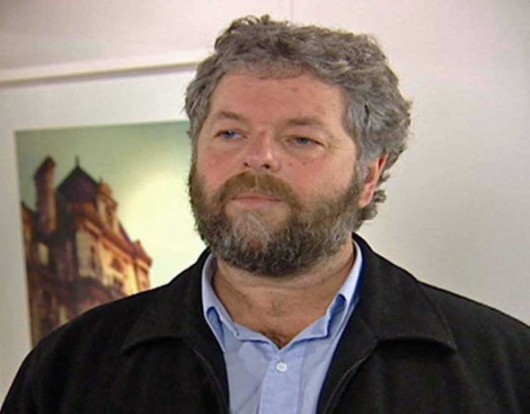 Tasmanian Greens MP Kim Booth
– blind faith in FSC
Tasmanian Greens MP Kim Booth
– blind faith in FSC
.
.
30th April (before the Vote): Dr Phill Pullinger gutted by Upper House changes to the bill but ‘rolled up sleeves’ to make agreement work
.
<<…Early this morning, the signatories of the Tasmanian Forests Agreement said despite the changes made to the bill by the Upper House, they could still support the bill and urged the Tasmanian Lower House to pass the amended legislation.
Greens MHA Kim Booth will cross the floor to vote against the bill, splitting from his following Tasmanian Greens members who will be voting for the bill.
Despite Mr Booth’s stance, and the state Liberals not supporting the bill, it’s most likely the bill will pass the Lower House and become law.
Dr Phill Pullinger from Environment Tasmania said they were gutted by the changes made to the bill by the Upper House at first, but said they ‘rolled up their sleeves’ and worked with the other signatories and the Tasmanian Government to work out a way to make the changed agreement still work. “They’ll be a lot of work yet to be done to make the promise and hope that has sat behind this agreement in this process actually follow through into reality,” said Dr Pullinger.
Dr Pullinger said although the bill is now different from the one the signatories first agreed to, they can still support it and make it work in a positive way for Tasmania’s native forests. “The legislation will protect all of the half a million hectares that are agreed to be reserved under this agreement from logging, not withstanding a small list of transitional coups, and it does lay out a pathway for those forests to be formally reserved under Tasmania law.”
.
Will Hodgman: “Liberals will undo the deal and the legislation”
.
Australian Greens leader Christine Milne announced the deal dead before it was even voted on.
“My Tasmanian counterparts will determine whatever they do in terms of the salvage operation, but I can tell you that the Tasmanian Forest Agreement is dead,” she said. “It was killed in the Upper House and the signatories also acknowledge it is dead in terms of the spirit and the letter of what was agreed.”
Ms Milne says environmental groups will be ‘picking over the scraps’ of the agreement to try to salvage something positive from it, but she says this bill is not the agreement and this is not the end to Tasmania’s forest wars.
Some non-signatory environmental groups have said the amended deal will not bring peace to the forests and protests are likely to continue.
Federal Environment Minister Tony Burke arrived in Hobart earlier today to hold talks with the signatories and Tasmanian government. He said there is no way to ever completely stop protests, but believes the passing of the legislation is an historic moment for Tasmania.
Tasmanian Opposition leader Will Hodgman says should the Liberals win a majority government in the next Tasmanian election, they will undo the deal and the legislation.>>
.
[Source: ‘Is this peace for Tasmania’s forests?’, 20130430, by Louise Saunders and Carol Raabus, ABC Hobart, ^http://www.abc.net.au/local/stories/2013/04/30/3748583.htm?site=hobart&ref=m21].
30th April (before the Vote): Terry Edwards says the amended legislation is closer to what loggers originally wanted
.
<<Tasmania’s Lower House is set to pass legislation aimed at ending decades of conflict in the state’s forest.
Tasmanian Greens leader Nick McKim says his party will approve the bill, which was heavily amended by the Upper House. Mr McKim told Parliament the changes mean that there is a chance that new forest reserves will not be created but peace deal signatories had asked the Lower House to pass the bill unamended.
“But the bill nevertheless provides…the chance of an absolutely stunning and historic conservation gain for Tasmania,” he said.
Greens forestry spokesman Kim Booth has indicated he will cross the floor but the Government will still have the numbers to make the peace deal law.
Earlier this month, the Upper House supported the legislation but made significant amendments. The signatories announced this morning that they would back those amendments.
The Premier, Lara Giddings, told parliament the forest industry will be better off with the peace deal. “Today is indeed a historic day. Today is indeed an important day for the forestry industry and today the Liberal Party show their true colours – they don’t care. We will be able to build a new future for Tasmania, a new future for forestry industry.”
.
Peter Gutwein: “Liberals will do everything that we possibly can to unlock every single stick.”
.
 Bass Liberal MHA Peter Gutwein
[Source: ^http://www.examiner.com.au/story/87353/gutwein-booted-from-parliament/]
Bass Liberal MHA Peter Gutwein
[Source: ^http://www.examiner.com.au/story/87353/gutwein-booted-from-parliament/]
.
The Opposition’s Peter Gutwein says in Government, says the passing of the bill will not end the long conflict. In government, the Liberals will undo any new reserves. “We will do everything that we possibly can to unlock every single stick,” he said.
Australian Greens Leader Christine Milne says whether or not the deal’s enabling legislation passes State Parliament, it will not resolve conflicts over forest protection. Senator Milne says in her opinion the peace deal is worthless. “What is now before the parliament is not the Tasmanian Forest Agreement, it is a remnant, it is the burnt ashes of what went up to the Legislative Council and they’re now into a salvage operation,” she said.
The Lower House is expected to sit late this evening before finalising debate.
…The Forestry Industries Association’s Terry Edwards says the amended legislation is closer to what loggers originally wanted. But he says the environmental NGO signatories are still getting a very good deal.
“There’s no doubt that the amendments made in the Legislative Council probably went further towards what we had originally bargained for,” he said. “But that said, if the bill couldn’t deliver on the ENGOs’ outcomes, then it wasn’t going to deliver on the outcomes of the agreement as a whole.”
Mr Edwards says it is an historic outcome, but there is still more negotiation ahead. “Vica talks about the opportunities presented being too important to lose and I certainly agree with that. But it’s those opportunities that we, as the signatories, and the two governments need now to seize to see whether or not we can actually do what we’ve promised to do.”
Mr Edwards says the Legislative Council has served voters well with its amendments to the deal. “To me they did a thorough job, to the best of their ability, inside the knowledge base they had. They applied a very strict public interest test over an agreement that was negotiated by people that do not have a public interest test. It’s our job now to work out how we implement that.”
Yesterday, environmental fringe groups labelled the bill ‘mutant’ legislation and warned they will not stop protesting if it becomes law.>>
.
[Source: ‘Historic forest peace deal set to pass’, 20130430, ABC Hobart, ^http://www.abc.net.au/news/2013-04-30/greens-to-back-forestry-peace-deal/4659544].
April 29: ‘Picton River Resolution April 2013’ – End logging in these forests!
.
 Picton River
Picton River
.
<<An activist workshop facilitated by Alice Hungerford, with members of the Huon Valley Environment Centre and Still Wild Still Threatened, gathered in the Picton Valley and discussed the Tasmanian forest campaign. This resolution calling for the forest agreement to be rejected was prepared by the workshop participants.While many conservation-minded people once held hope that the forest negotiation process may lead to forest protection outcomes, these hopes have been diminished by the ongoing conservation compromises made and more recently due to the current amendments made by Tasmania’s Legislative Council.
The amendments that have been made to this agreement by the Legislative Council render the deal void of any real conservation gain, yet prop up the dying native forest industry. These amendments are totally unacceptable.
One amendment is that forest proposed for protection in the first stage are only those areas that are in the World Heritage nomination currently before the IUCN. Leaving out large areas of high conservation value forest in:
- The North West, the Tarkine
- The North East and East
- Weilangta
- Tasman Peninsula
- Bruny Island
- West Wellington.
.
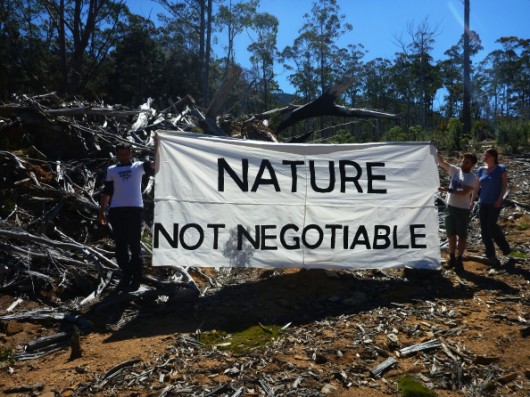 Roses Tier, North East Tasmania
^http://observertree.org/category/photos/
Roses Tier, North East Tasmania
^http://observertree.org/category/photos/
.
These forests will not be reserved unless the native forest industry in Tasmania receives Forest Stewardship Certification (FSC). Protection will be delayed until at least October 2014, however it will be dependent on this certification.
This is an amendment laced with problems; the forestry industry is not committed to changing the current regime of clear-felling, creating huge quantities of wood that is referred to as‘residues’ by the industry, continued logging on steep slopes, old growth destruction and continuing regeneration burns. If these are the logging practices that are to be granted FSC status, then this would be a severe sabotage of the FSC process and bring into question the credibility of certification. Worse still it entrenches Tasmania into ongoing destruction of native ecosystems at a critical time of climate change.
This amendment shows the clear direction of this deal – to support the ongoing native forests industry. This is a far cry from the original purpose of the negotiations, which promised a transition out of native forests in Tasmania.
We cannot accept a deal which seeks to prop up native forest destruction, clear felling and a return to wood-chipping. We cannot accept a deal that does not deliver the protection of verified high conservation value forests upfront. We cannot accept a deal which will further weaken Tasmania’s forest practice standards and which has the potential to jeopardise the integrity of FSC.
First and foremost Tasmania needs secure protection of high conservation value forests, an end to logging in these forests. Secondly the forestry industry has to prioritise restructure; bring an immediate end to out-dated practises that are ecologically damaging.
The large-scale volume-driven nature of the forestry industry must be restructured to support high-value labour-intensive use of every possible part of every tree harvested. And a rapid transition into plantations is required.
A further amendment has provided for World Heritage value forests in the Great Western Tiers to be excluded from upfront protection, despite being a part of the nominated area currently before the IUCN. Protection of these forests appears to be delayed until October 2014 and also dependent on FSC.
It is unacceptable to exclude any areas from protection that have been verified as World Heritage value. And it is unacceptable to continue to log areas within the World Heritage nominated forests or to allow access for logging for speciality timbers in perpetuity.
Another amendment made by the Legislative Council is that any reserve (including in the World Heritage Area) could be logged for special species timber as defined by the Minister of the day, if this is deemed necessary in the future. It is unacceptable for logging to occur inside reserves for speciality timbers, yet meanwhile such timbers have been left in clearfells and burnt in the annual Autumn high-intensity burns for far too long. Ending high intensity burn practises and providing funding for salvaging special species timbers off the coupe floor and storing these timbers in regional wood banks would provide ongoing employment.
Most importantly, the health repercussions for all Tasmanians from burning and poisoning our land, water and air through the current out dated practices must be acknowledged and monitored reparation is required.
The people of Tasmania bear the full social, financial and community costs of the forests destruction, and government prop up of the unsustainable industry.
Who we are: we are mothers, grandmothers, daughters, children, sisters and brothers, teachers, community workers, volunteers. We are people who care. We are strong, and loving and joyous. We are activists. We work for change.
We are committed to caring for our country. We take full responsibility for our words and our actions. We participate in all parts of this community, we call Tasmania home.
We stand for justice, empowerment, safety and ecological sustainability. We recognise the urgent need for people to wake up, to rise up and support broad-scale restorative change.
We are passionate about democracy and expect every member of Parliament to stand up and do the right thing, to put Tasmania and Tasmanians as their very first consideration in making decisions about land and resources.
The process of reaching an Inter-governmental Agreement on Tasmania’s forests has taken almost 3 years and has been fraught with bias. The process has been heavily skewed toward industry gain and conservation loss. We do not support the future of forest protection to be dictated by the special council that is set up by this Tasmanian Forest Agreement, which again is dominated by industry interests, as membership of the council will have three conservationist representatives and eight industry representatives. We call on our elected representatives to shape a future for Tasmania that insists on ecologically sustainability.>>
.
[Source: ‘Picton River Resolution April 2013’, 20130429, by Jenny Weber, Huon Valley Environment Centre ^http://www.huon.org/ and Miranda Gibson, Still Wild Still Threatened, ^http://observertree.org/2013/04/29/picton-river-resolution-april-2013/].
27th April: The Legislative Council has fired a torpedo into the Tasmanian Forest Agreement
(Former Greens Senator and Founder, Bob Brown)
.
<<After the Agreement was struck last year the Prime Minister, Julia Gillard, made it clear that she expected it to be implemented without alteration. In perhaps the biggest downpayment in Tasmanian history, the Commonwealth gave $120 million to the collapsed logging industry to make good the Agreement. It promised over $100 million more for regional development on condition that the Agreement was fully implemented, including its promised forest reserves.
However, here in Tasmania, under concerted fire from the Liberals and disgruntled individuals from the logging industry, the Legislative Council has voted to amend the enabling legislation which was passed by the House of Assembly and blown up the Agreement’s environmental outcome.
The Council’s amendments leave the loggers’ interests wholly intact while putting the bulk of the environmentalists’ outcomes on the never-never. The Agreement’s promise of immediate and permanent reserves in return for the hundreds of millions of dollars in industry restructure, retraining and regional development is largely broken.
Gazetting of the majority of the promised national parks would be delayed until, if the polls are right, Liberal governments are voted into both Canberra and Hobart. The Liberals have campaigned against the forest peace agreement all the way down the line. Ignoring the fact that it is industry and environment groups which have spent three years negotiating the Agreement, not Labor or the Greens, Liberal spokesman Peter Gutwein asserted after the Council vote that ” we will unlock every single stick that Labor and the Greens try to lock up”.
Legislative Councillor and Liberal Party member Tony Mulder, who sealed the Council’s amendments, emailed one logging campaigner to reveal his plan was to ‘get some fed dollars’ and then watch the deal fall over. He wrote that he intended to put the reserves ‘to the sword’.
Key to this hostile game plan played out by the Council amendments is sinking the core commitment in the Agreement that “the Signatories support the legally binding protection of an additional 504,012 hectares of native forests’, with 395,199 hectares given legislative protection ‘as soon as feasible’. That is, this year.
Three of the many Council amendments to the legislation highlight their killer effect. Firstly, after interim protection, some 300,000 of those 395,199 hectares of High Conservation Value forests to be reserved ‘as soon as feasible’ have had that reservation put off until at least October 2014. That means the Liberals, if they win the elections, will put the promised reserves ‘to the sword’.
Even if the Liberals stay in opposition, the reserves fail if there are any substantial protests in a state where forest destruction and protests have occurred every year since the 1970s. To make sure, the reserves also fail if Forestry Tasmania, which has been refused green accreditation for years, is not given Forest Stewardship Council certification by the mainland-based authority.
Secondly, of the 123,000 hectares of top order forests, like the Styx, Huon, Weld and Upper Florentine, which were nominated by the federal and state governments for World Heritage status last February, a Council amendment removes 35,000 hectares near Cradle Mountain and in the Great Western Tiers from gaining national park status unless both the nomination succeeds and that green accreditation is granted to Forestry Tasmania.
Another Council amendment to the Agreement is that any reserve, including in the World Heritage Area, could be logged for special species timber, as defined by the minister of the day, if this is deemed necessary in the future.
In a nutshell, the Tasmanian Forest Agreement’s fundamental deal that 395,199 hectares of High Conservation Value forest reserves, ostensibly national parks, should be created in return for the hundreds of millions of dollars of industry and regional restructuring is being torpedoed.
The logging industry employs fewer than 2,000 and that number is falling. Tourism employs more than 15,000 and that number is growing. The Council’s perverse action, if allowed to stand, will mean that the former has its money while the latter is left with neither vital new forest attractions nor the regional development funds it should share in creating Tasmania’s new future.
This puts governments in both Canberra and Hobart to the test. The House of Assembly should return the original legislation to the Council. If the Council insists on its amendments let history, as well as contemporary Tasmanian voters, see it for the wrecker it has become. — Bob Brown.
According to TWS spokesperson, Vica Bayley, “we are still looking at ways we can improve the workability of the Agreement given the Legislative Council’s amendments”. We are not prepared to give up and are exploring all other options. There may be no way other than re-amending the [Tasmanian Forest Agreement] Bill”, Mr Bayley said.
According to Mr Bayley some of the Signatories were working through a number of options including asking the State (minority) Government to further make amendments before putting it back before the Legislative Council.
The Signatories have until this Tuesday morning (30 April) – when State Parliament sits – to devise any amendments. ‘A group of the Signatories’ had met in Melbourne on Tuesday [23 April] and there were on-going telephone hook ups.>>
.
[Source: ‘The Council’s Torpedo’, by Bob Brown’, 20130427, Tasmanian Times, citing article ‘Green groups burn night oil in forest pact by Nick Clark’, 20130427, in The Hobart Mercury, ^http://tasmaniantimes.com/index.php?/weblog/article/the-councils-torpedo/].
19th April: Tasmanian Parliament recalled over forestry bill
.
<<Tasmania’s Parliament will be recalled later this month to finalise legislation to enact the forest peace deal. The Legislative Council has significantly amended the bill, jeopardising the deal.
It is unclear whether environment groups will accept the changes.
Opposition Leader Will Hodgman postponed question time in a bid to force the Lower House to debate the contentious bill. “Let’s finish this once and for all,” he told parliament. After today, this House doesn’t sit for another five weeks, that’s five more weeks of uncertainty.”
Labor and the Greens denied the debate, the Premier saying she will recall Parliament on April 30th to deal with the matter. Ms Giddings says the Government cannot accept legislative changes which undermine the historic peace agreement. She says the Government and peace deal signatories need more time to work through the changes.
“My hope is that we will find that all of us can be supportive of the legislation, but we don’t know that at this point in time,” she said. “There are discussions that need to be had.”
Greens leader Nick McKim says it is the right thing to do. “The signatories have been clear they would like more time.”
Deputy Premier Bryan Green is also against rushing the debate. “This is the biggest decision that this state has had to face up to in more than three or four decades,” he said.
Signatories meet
The signatories are consulting their supporters and are expected to meet to discuss the Upper House changes later today. The Wilderness Society’s Vica Bayley says it is too early to say if his organisation will accept the changes. “Our members will be concerned, as are we, about these changes,” he said. “This does not reflect the implementation of the Tasmanian Forest Agreement. “It certainly puts a question mark over the delivery of a range of opportunities that that agreement afforded.”
Environmental groups say they will continue a holding-pattern on international timber market protests while they consider the changes. Environment Tasmania’s Phil Pullinger says the focus is on finding a solution. “We absolutely remain committed to the agreement we made in November, we’re not going to walk away from that,” he said. “We do need some time to analyse what this legislation means with respect to the agreement. “We would not be changing anything in terms of us continuing to be in a holding pattern as far as the market place is concerned.”
.
[Source: ‘Parliament recalled over forestry bill’, 20130419, ABC Hobart, ^http://www.abc.net.au/news/2013-04-18/parliament-to-be-recalled-over-foresty-bill/4636720].
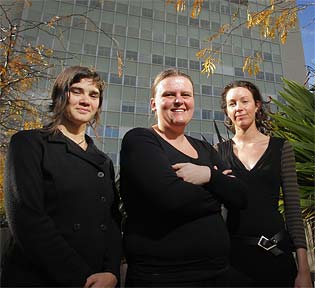 Tasmania’s women of principle
Miranda Gibson (SWST), Jenny Weber and Jasmine Wills (HVEC) back in 2011 launching a TV campaign against Forestry Tasmania
[Source: Photo by Richard Jupe, Hobert Mercury, New Ltd,
^http://www.themercury.com.au/article/2011/05/23/232161_tasmania-news.html]
Tasmania’s women of principle
Miranda Gibson (SWST), Jenny Weber and Jasmine Wills (HVEC) back in 2011 launching a TV campaign against Forestry Tasmania
[Source: Photo by Richard Jupe, Hobert Mercury, New Ltd,
^http://www.themercury.com.au/article/2011/05/23/232161_tasmania-news.html]
.
Footnote (2012):
.
Ed: ‘Tazmania’: a perpetuating cultural history of exploitation and embattlement,
simply because of a recurring handful of selfish middle-aged men prepared to bully to get their way.
.
Oct 2012: Greens and FIAT push for resolution
.
<<The Forest Industries Association of Tasmania (FIAT) has announced it will rejoin the forest peace talks … for now.
The Tasmanian Greens and FIAT are pushing for the forest peace talks to be wound up soon. FIAT has declared it will return to the talks to end the state’s long-running forest wars.
The chief executive Terry Edwards said the Commonwealth and State governments were losing patience with the process and an agreement to restructure the state’s struggling forest industry had to be reached by the end of the month.
The Greens leader Nick McKim said FIAT’s return to the talks should prompt the other suspended forest groups to return to the peace talks. “I do believe that at some stage we will either need from the signatories an agreement or an agreement that an agreement can’t be reached,” he said. “So look, I would like to see this process concluded, I think most Tasmanians would like to see this process concluded. The good news now is that with FIAT back in, the process can proceed.”
The $276 million dollar, Federally-funded forest peace talks have been running for two years. The Forest Industries Association, which represents large saw millers and veneer processor Ta Ann, had suspended its involvement in the talks over the Government’s plan to overhaul Forestry Tasmania. Members met on Friday to vote on whether to walk out permanently.
The chief executive, Terry Edwards, said it was a tight vote but a last minute letter from the Premier Lara Giddings prompted the group to return to the table. “We feel we’ve got too much invested in that process to date to simply walk away,” he said.
Mr Edwards would not detail what the letter said other than saying it gave assurances the industry would be consulted about the changes to Forestry Tasmania. “She has clearly indicated that the reform will be evidence-based and that’s something we’ve been asking for since the announcement of the reforms of FT. “Our concern to date has been that it will be politically-based, not evidence-based, and that’s a very welcome change of direction by the government.”
Mr Edwards put a new final deadline on the peace talks – the end of the month. He said FIAT would withdraw permanently if a decision was not made by then.
The Premier, Lara Giddings, welcomed the announcement, saying it recognised there was an “urgent need” to restructure the state’s struggling forest industry.>>
.
[Source: ‘Greens and FIAT push for resolution’, 20131006, ^http://www.abc.net.au/news/2012-10-05/fiat-to-stay-in-peace-talks/4298180].
<<There was a man outside the Executive Building at the time when Terry Edwards and Phill Pullinger fronted a waiting media pack at 1 pm on the afternoon of Wednesday 15 August, 2012. These two Signatory representatives were there to release the Interim Agreement on Tasmanian Forest Wood Supply and Conservation.
Mr Glenn Britton of Britton Timbers and chairman of the Forest Industries Association of Tasmania was also there.
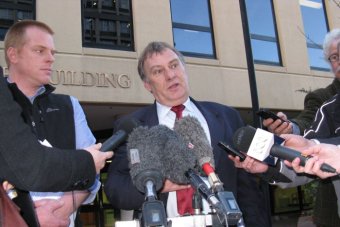 Chief Executive of Forest Industries Association of Tasmania (FIAT), Terry Edwards
Chief Executive of Forest Industries Association of Tasmania (FIAT), Terry Edwards
.
On 23 August whilst Terry Edwards, the CEO of FIAT was holidaying in Fiji, Mr Britton was in the media spot-light over an article on correspondence he had with the Leader of the Opposition, Mr Will Hodgman.
Louise Saunders: ‘… you are a saw miller, you’re Chairman of the Association, do you have concerns or reservations (over the IGA process)?
Glenn Britton: Oh, look, it would be fair to say everyone has reservations and ahh… the reason why. That to date the agreement hasn’t been achieved is because of the, ahh… the huge gap that’s still apparent between sufficient forest to supply the, ahh… the, ahh… the appropriate or required level of, ahh… level… or volume of sawlogs and peeler logs and special species timber by… by volume and by quality, and size and age class etc… to sustain a viable industry into the future on the one hand and on the other hand, ahh… having that; allow sufficient, ahh… ahh… forest to, ahh… add to the current one and half million hectares of forest reserves already in Tasmania.
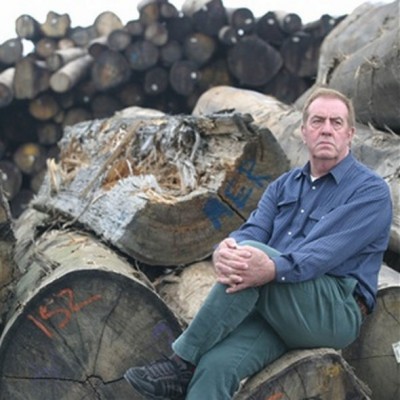 Glenn Britton (FIAT Chairman)
Glenn Britton (FIAT Chairman)
.
In April-May 2011 Britton Brothers along with Ta Ann Tasmania wrote a submission that was part of FIAT’s submission to the Legislative Council Inquiry into transitioning out of native forest logging. Their Smithton sawmill processes 30,000 cubic metres of native forest logs employing 75 mill workers and 30 forestry contractors. Their timber products are ‘aimed at the high value appearance-grade markets – furniture, joinery, cabinet making and feature flooring, used in commercial and residential fit outs in Australia an overseas’.
Britton Timbers sawlog resource is supplied by Forestry Tasmania from native forests in north west Tasmania. The company offered an assessment of ‘a transition to plantation processing for Britton Timbers. For them it came down to the recovery of a suitable quantity and grade of timber from plantation sawlogs.
According to Britton Timbers the recovery of sawn timber from a modern sawmill in Tasmania from native sawlog is 35%. They compared that against a 40% recovery with Eucalypus nitens plantation sawlogs.
From their annual wood supply of 30,000 cubic metres, they estimate 10,500 cubic metres of sawn timber from native sawlog and 12,000 cubic meters from plantations. They sell graded sawn timber according to Select, Standard and Utility categories.
When it came down to the sale price, Britton Timbers maintains that their annual turnover would be disadvantaged (Figure 2); $10,290,000 from native forests versus $8,040,000 from plantations.
For Britton Timbers, a transition to a plantation resource is hampered by: (1) a lack of plantation wood supply until 2035, and (2) predominant species currently in the state forest estate – Eucalyptus nitens – is not suitable for producing appearance-grade timber for high-value wood products.
Their suggested transition strategy to plantations needed to include:
(1) A move to plantings of E. globulus
(2) Plantations managed for sawlog production by high-pruning and thinning trees from an early age
(3) Growth to ‘a suitable diameter’ [600 mm in diameter]
.
According to Britton Timbers’ May 2011 submission:
“Native forests can be managed for biodiversity, carbon capture and sawlog production either in perpetuity or until we have a plantation resource suitable for processing, but this will take around 25 years. Until such time as the forestry industry has a plantation estate capable of producing the quality of timber required by saw mills and rotary peeled veneer mills, any discussion of a transition is hypothetical.”>>
.
[Source: ‘More grist for the mill …’, 20120829, by David Obendorf, Tasmanian Times, citing Britton Timbers 2011 submission to the Legislative Council Inquiry into public native forest transition April-May 2011, accessed August 2011, ^http://www.tasmaniantimes.com/index.php/article/more-grist-for-the-mill-].
Comments:
.
Comment by lmxly (20120829):
<<Britton Brothers received a total of $1,567,308 under the TCFA. in 2004-06, from the Tasmanian Forest Industry Development Program.
The TCFA document “A way Forward for Tasmania’s Forests” states ‘This program will help hardwood mills to adjust to the different types of logs they will need to process as a result of the move away from old-growth clear-felling towards regrowth and plantation timber.
Assistance will be provided for projects that:
- Improve sawlog recovery rates and add value to forest resources (particularly regrowth wood and native forest thinnings)
- Develop new forest products
- Result in more efficient timber use
- Assist with adjustment to the changing nature of supply.
.
What did Britton Bros actually spend over $1.5million of taxpayer funds on, if not the purposes of the TFIDP?
Has Britton Bros not ” adjusted to the different types of logs they will need to process as a result of the move away from old-growth clear-felling towards regrowth and plantation timber.”? If not why not?
Have they in effect pissed this money up against the wall? Or were they conned by FT that its plantation estate would produce satisfactory sawlogs after 2020 – which is only eight, not twenty five years hence?
To claim that ‘any discussion of a transition is hypothetical’ a demonstration of Britton’s hypocrisy: incompetence at best, since this discussion has been far from hypothetical for the pst five years, and he has received over $1.5m to find a way to make the transition for his operation.>>
.
Comment by David Obendorf (20120830):
.
<<Terry Edwards will be back from Fiji and no doubt Bob Gordon isn’t far away either. The pow-wow will be on with Ken Jeffreys and Evan Rolley and Glenn Britton. It looks like they will have to take Bryan out somewhere ‘noice’ for tea in Burnie and try to sort him out on a few things.
Maybe they can ask Bryan where the high quality sawlog until the plantations are available will be coming from. Bryan can ask them who’s putting up their hand to take a slice of Julia Gillard’s $15 million of the saw-miller exit money? It ain’t easy being Bryan Green at the minute.
<<…CEO for Ta Ann Tasmania is Evan Rolley – TAT’s wood supply to 2027 is 265,000 cubic meters per annum. That is the checking move from the Industry side – no doubt about it.
Former CEO of TWS, Alec Marr is now the cock of the rock of the moth-balled Triabunna woodchip plant. Dealing with wood residue from forestry activities and sawmills. That is checking move from the ENGO side – no doubt about it.
FT Tasmania has been extremely irresponsible and culpable in its erroneous projections of high quality saw log and peeler logs from eucalypt plantations. They have led their Ministers, Canberra and local sawmillers up the garden path.
The publicly accessible plantation estate is of limited value to sustain the supply and quality required to 2030 and FT has always known this! That makes any deal on the 430,000 to 572,000 ha of HCV native forests looking like a stalemate.
Mr Bayley and Dr Pullinger should realise this fully by now. FT Tasmania – who baulked and blocked and weren’t even a party to the roundtable – had controlled the agenda and led the ENGOs into their forest territory – production forests.
The Liberals 150,000 ha of extra forest reserve looks like the position that FIAT was offering to the ENGOs in their negotiaton scenario in June 2011 (maybe even earlier).
Ta Ann doesn’t look like budging on their wood supply unless they see a very good reason to reduce their access to native forests for peeler billets in Tasmania. Any capitulation from them would come down to money [like the Gunns Ltd/FT pay out of $39 million] and negotiating with Mr Rolley on behalf of the parent Ta Ann company.
Where is Plan B, because Plan A looks like it may be stale-mated?
.
.
Further Reading:
.
[1] >Tasmanian Forest Agreement 2012.pdf (300 kb)
.
[2] >Tasmanian Forests Agreement Bill 2012.pdf (300 kb)
.
[3] >TFA Fact Sheet Summary of Outcomes.pdf (500 kb)
.
[4] >TFA Fact Sheet TFA Bill Overview Final.pdf (330 kb)
.
[5] >TFA Fact Sheet TFA Reserve Process Short Version.pdf (540 kb)
[6] >Threats to Wild Tasmania – articles (on this website)
.
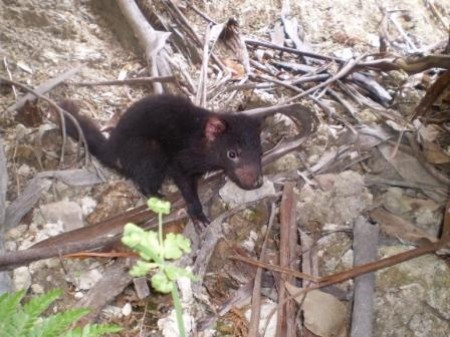 Tasmanian devil in The Weld Forest
(the forest is being logged)
Tasmanian devil in The Weld Forest
(the forest is being logged)

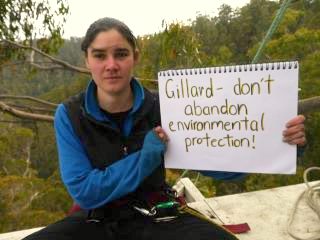
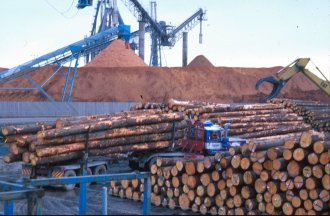
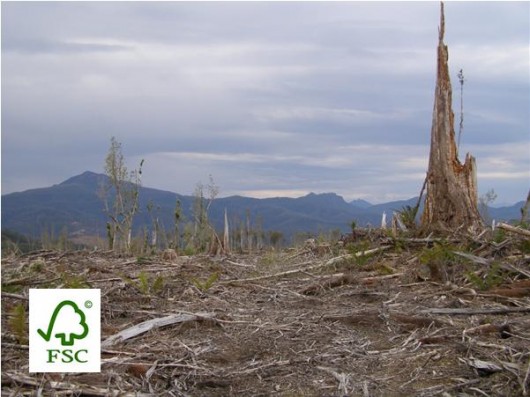
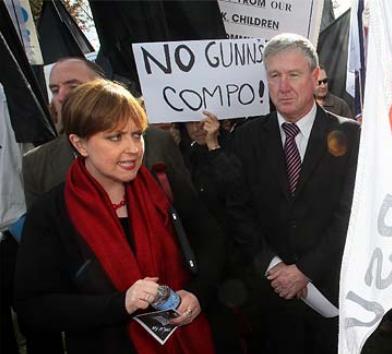
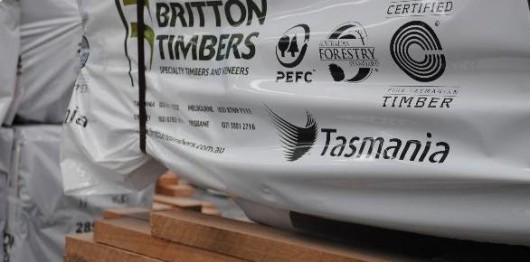
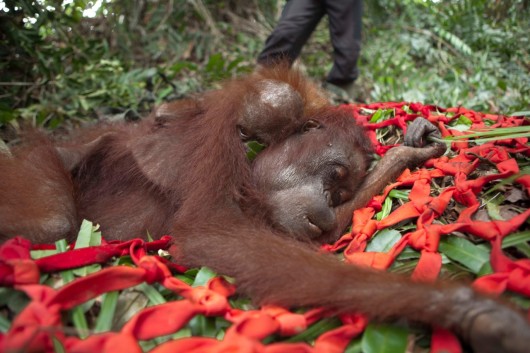

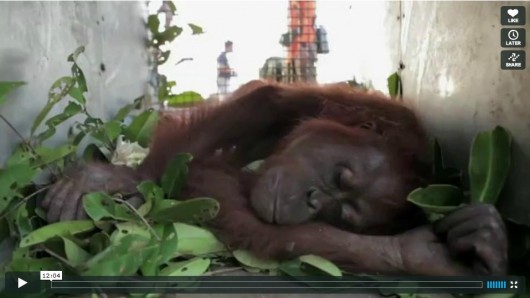





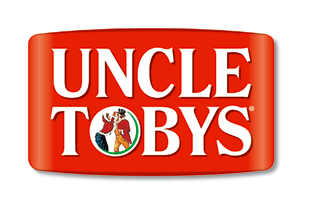
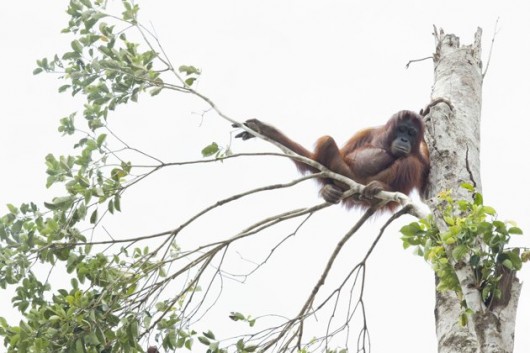











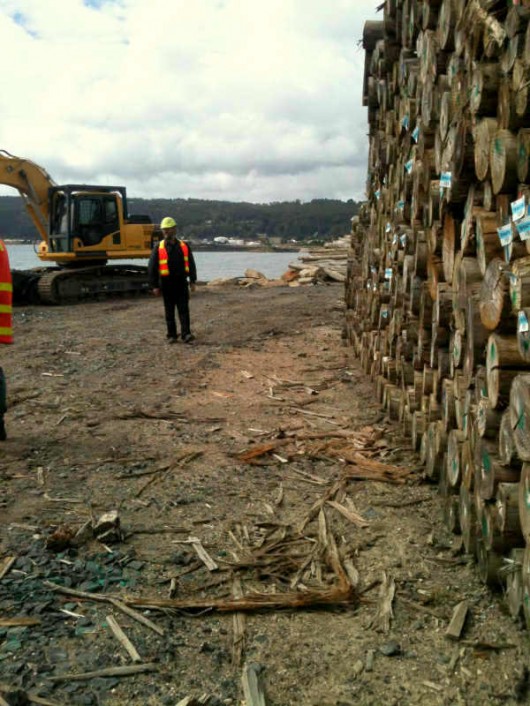
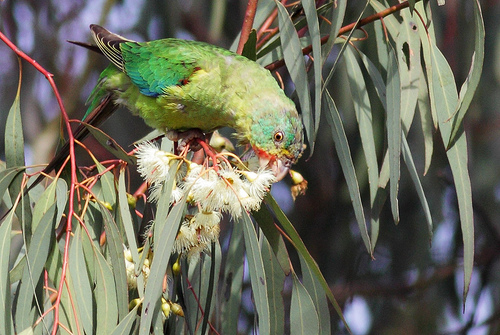

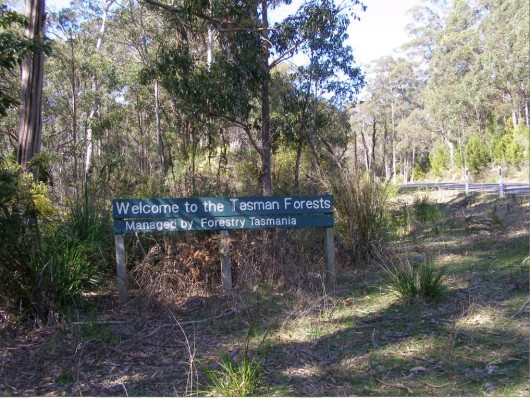

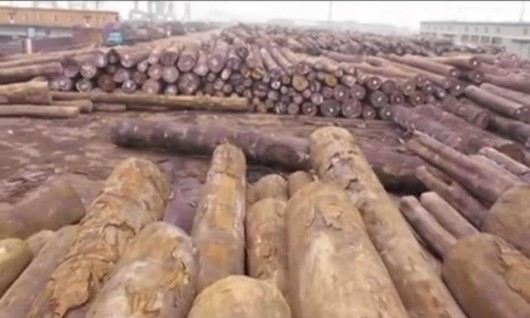

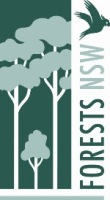
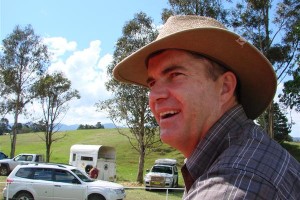

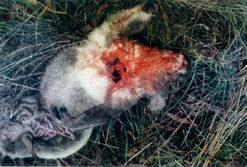


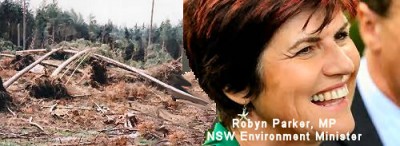


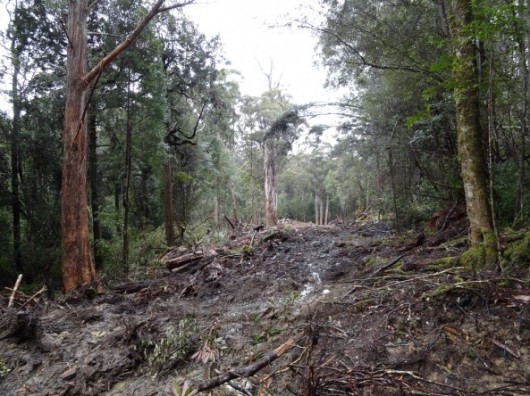
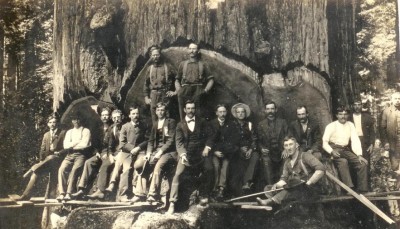
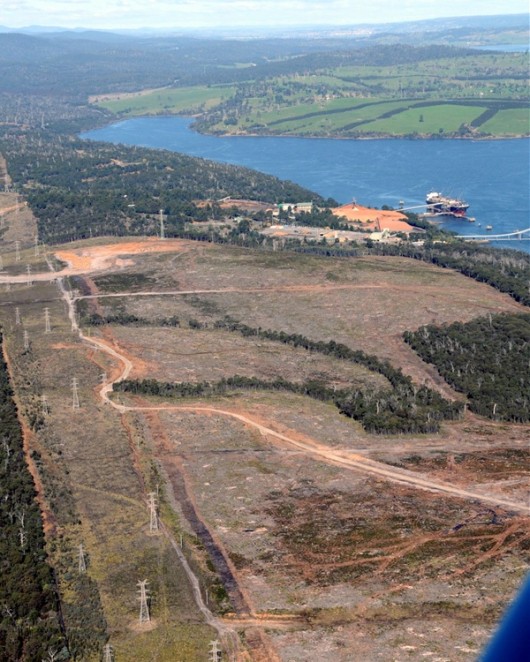
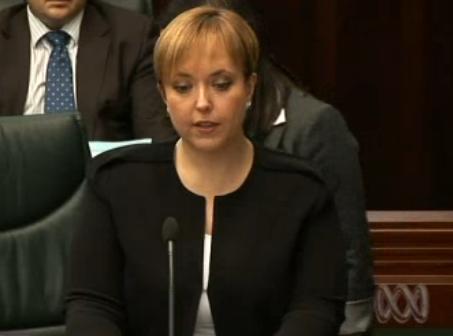
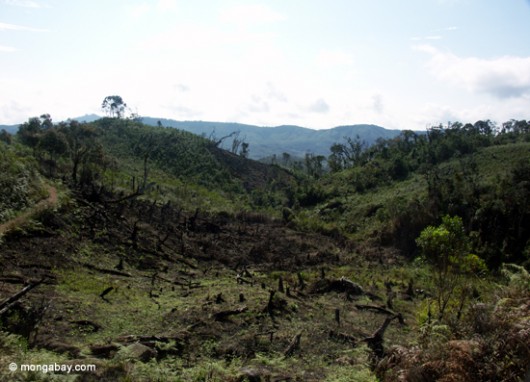
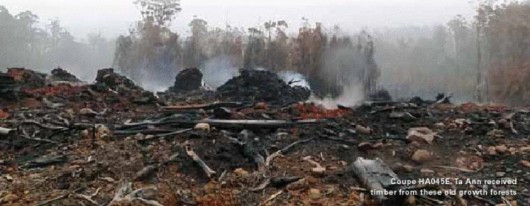
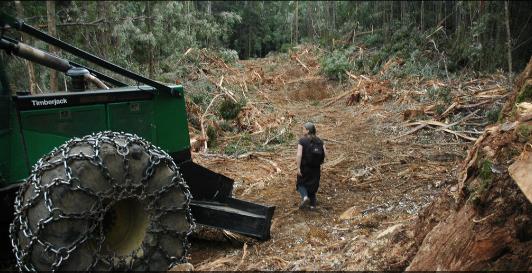
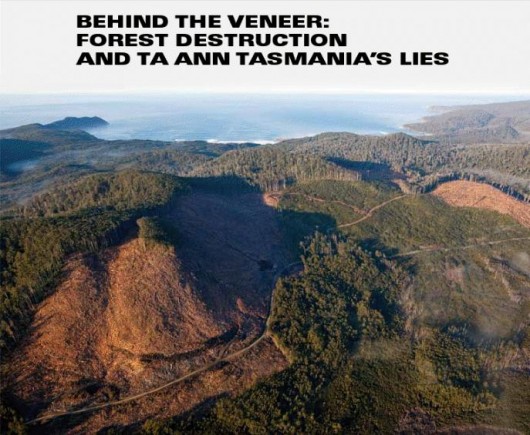
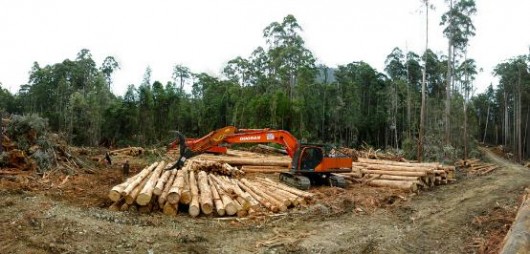
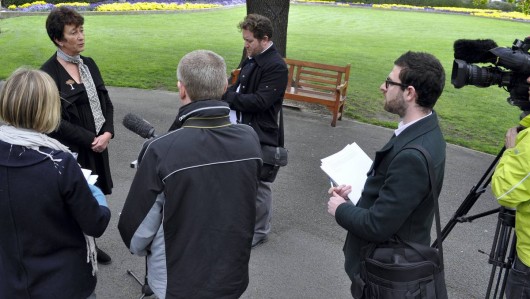
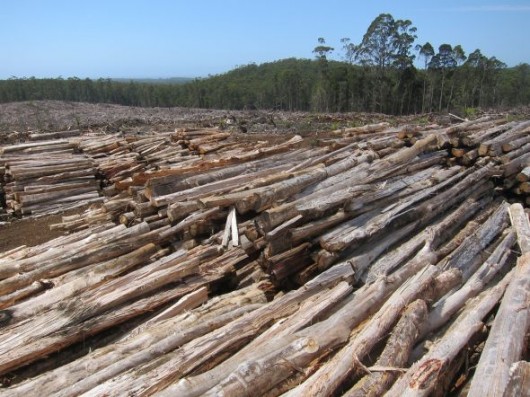
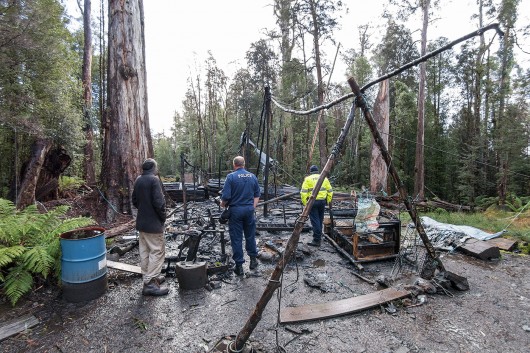
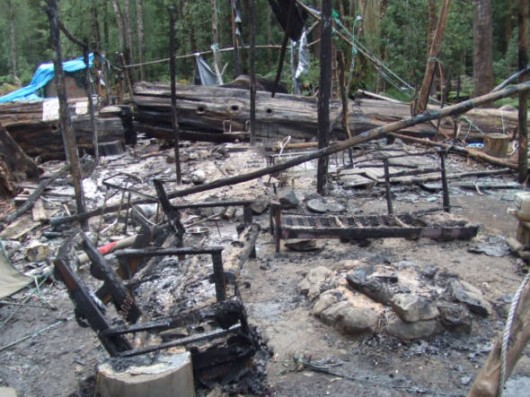
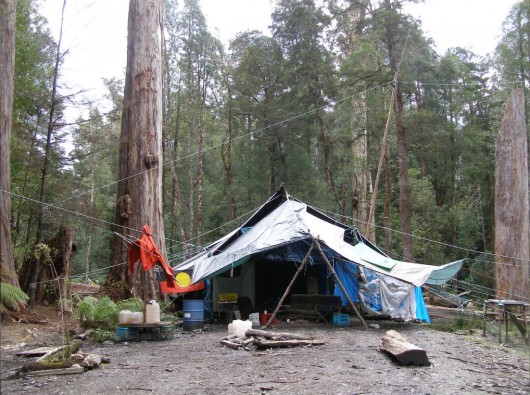
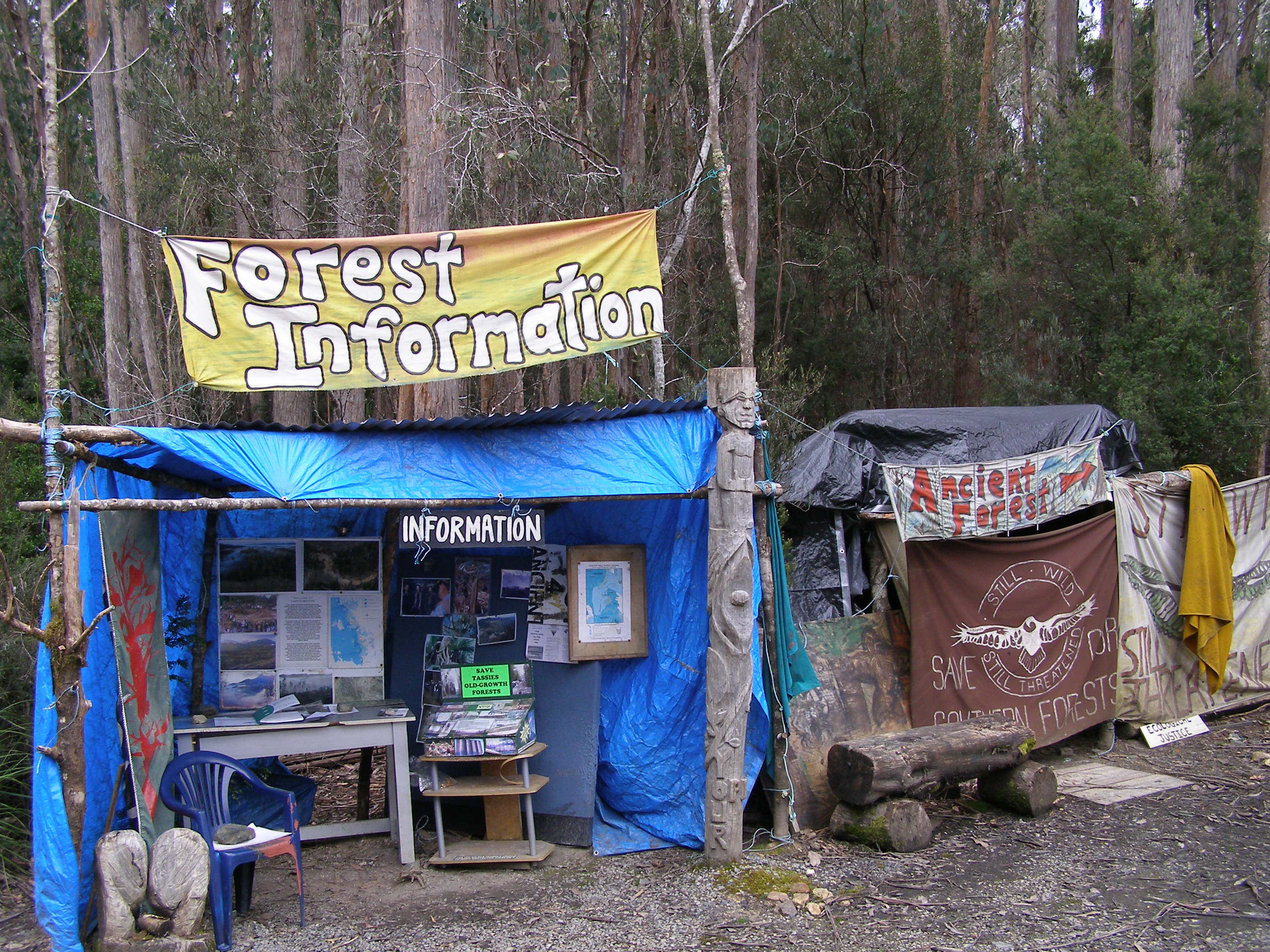
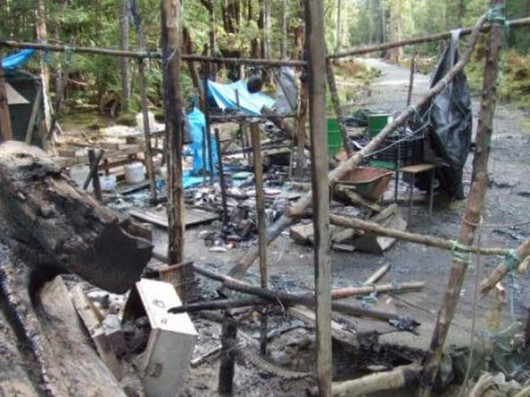
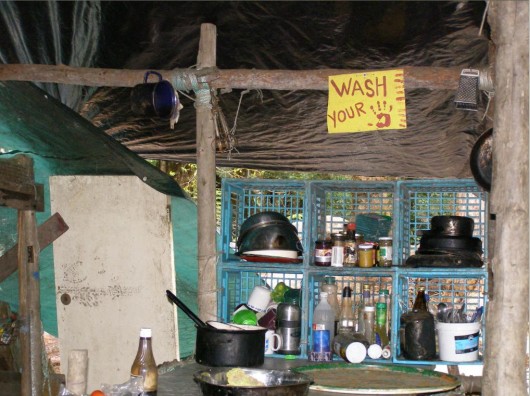
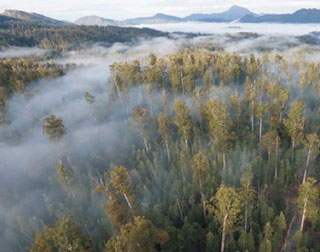
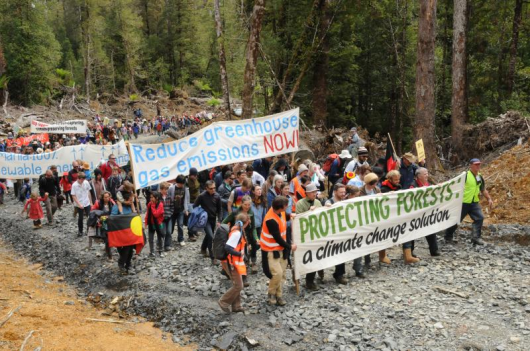
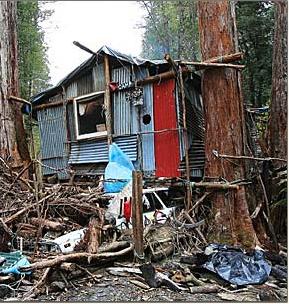
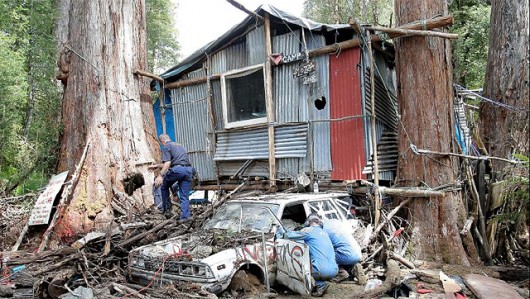

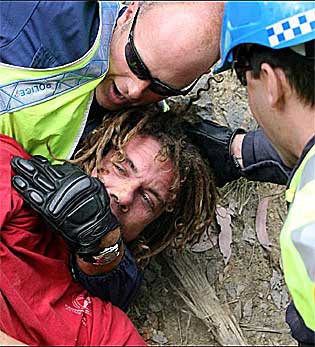

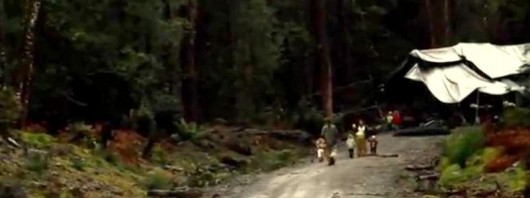

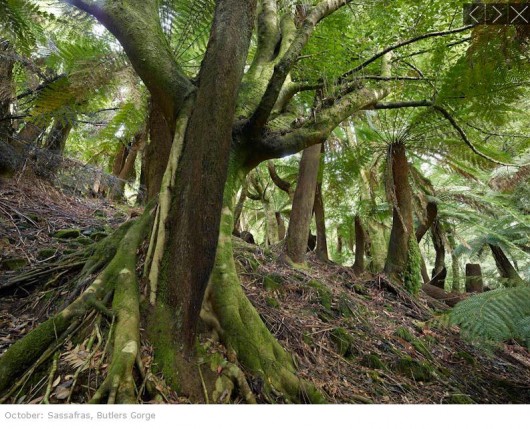
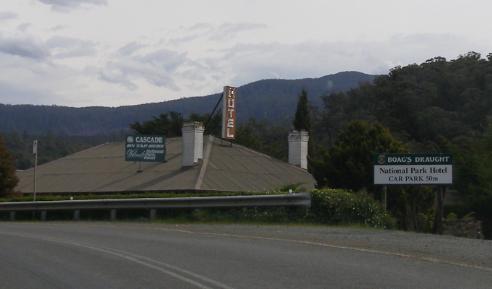
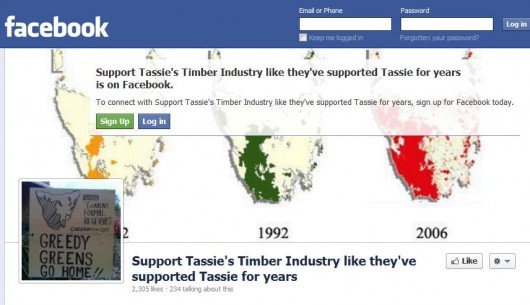
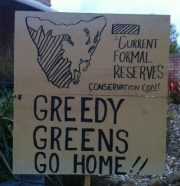
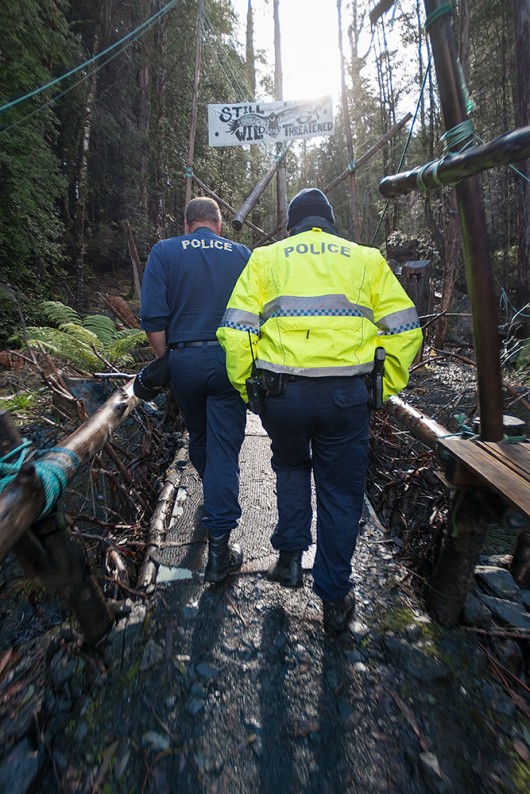
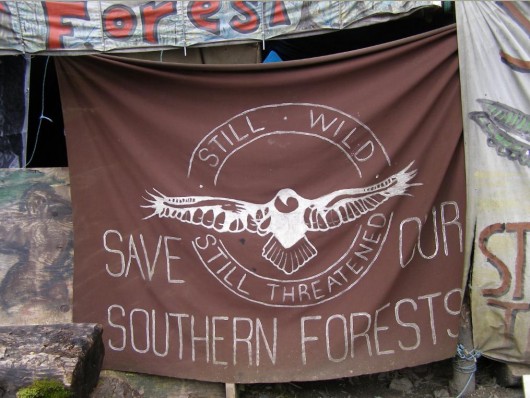
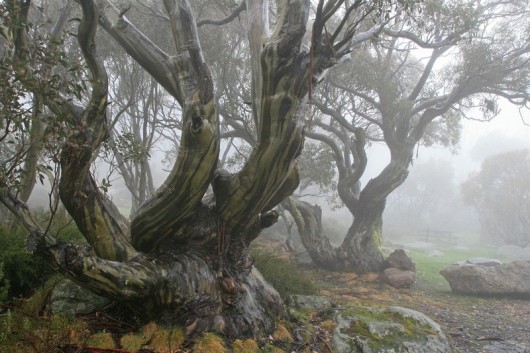
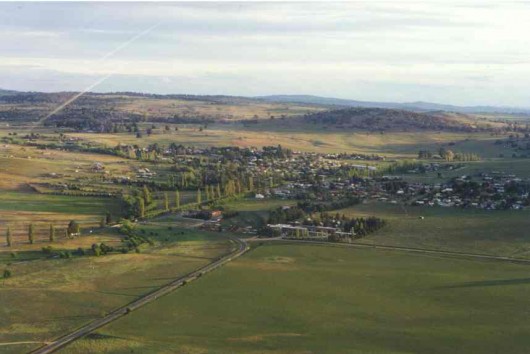

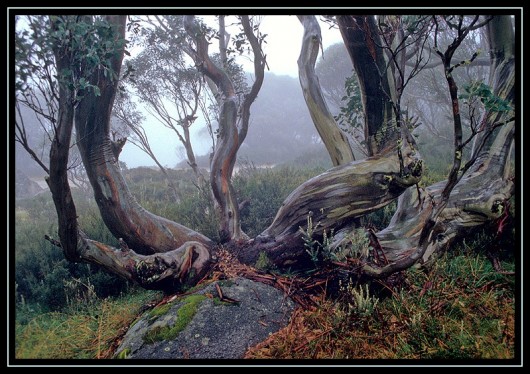 Snow Gums do not enjoy being burned to death
Snow Gums do not enjoy being burned to death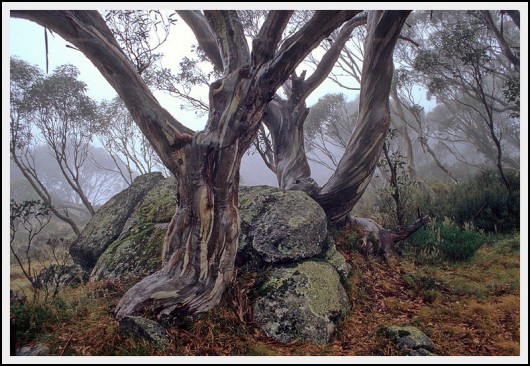
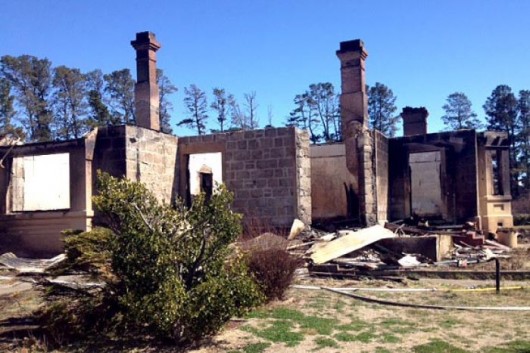

 Captain Michael D. Miller in 1968
[New life amongst so much death]
Captain Michael D. Miller in 1968
[New life amongst so much death]









